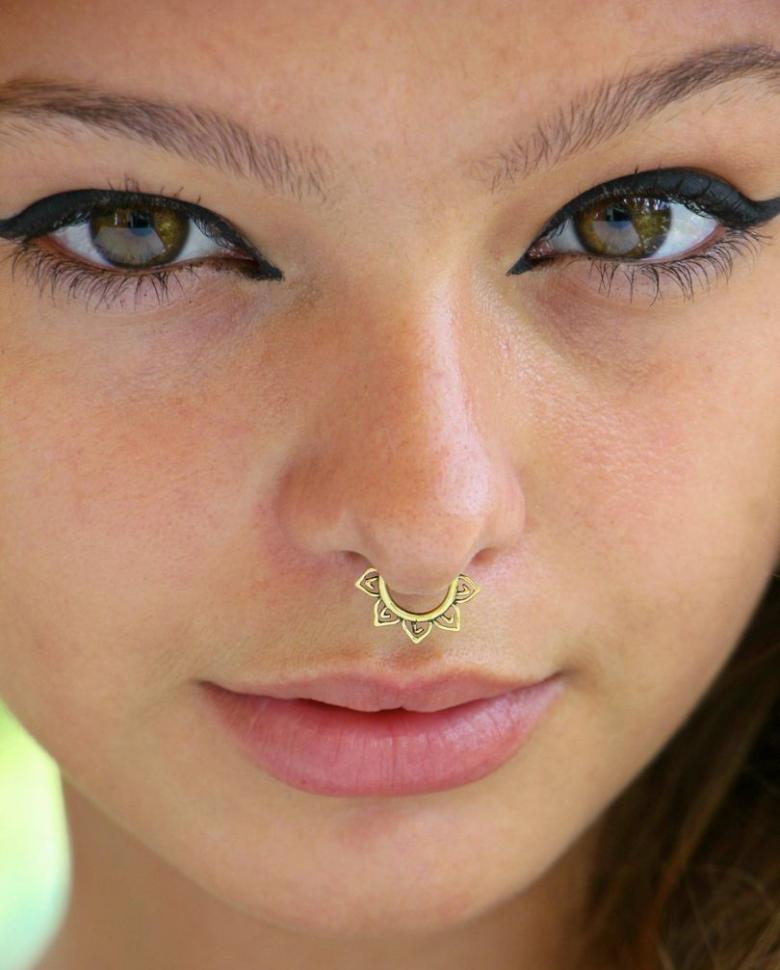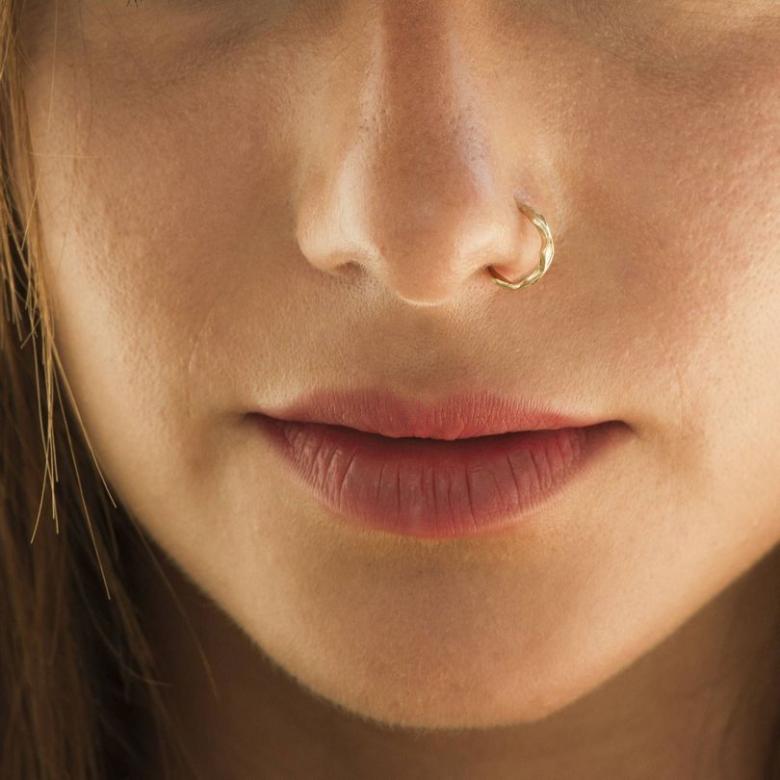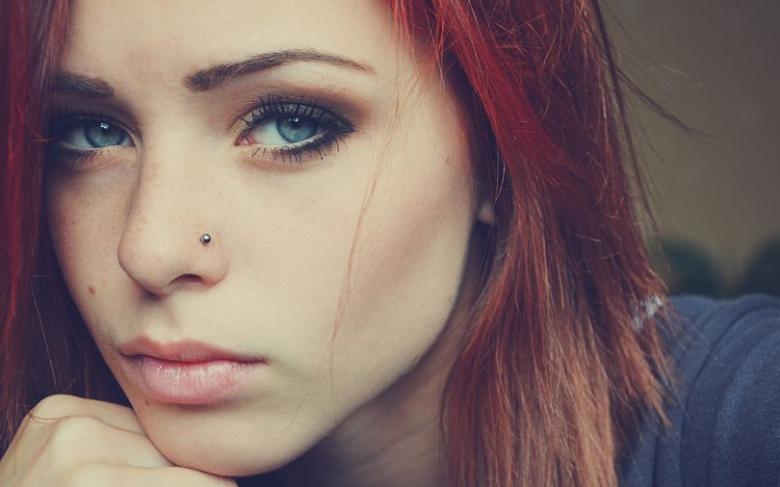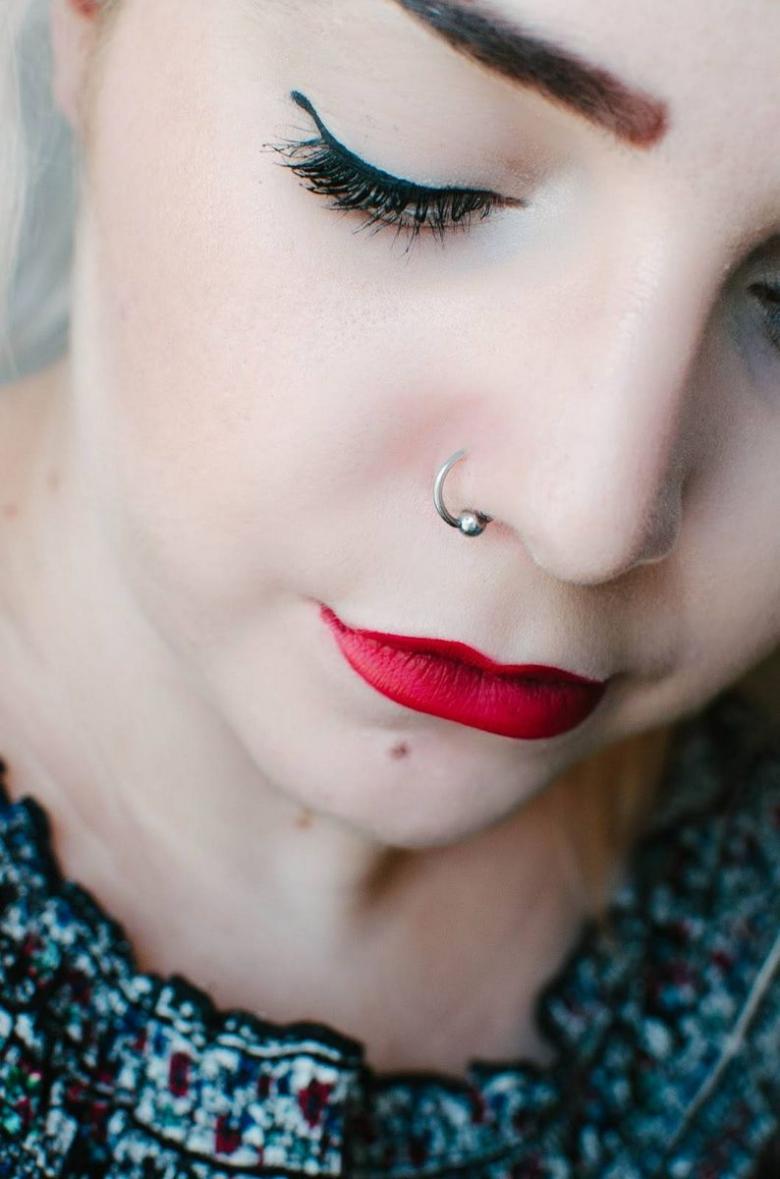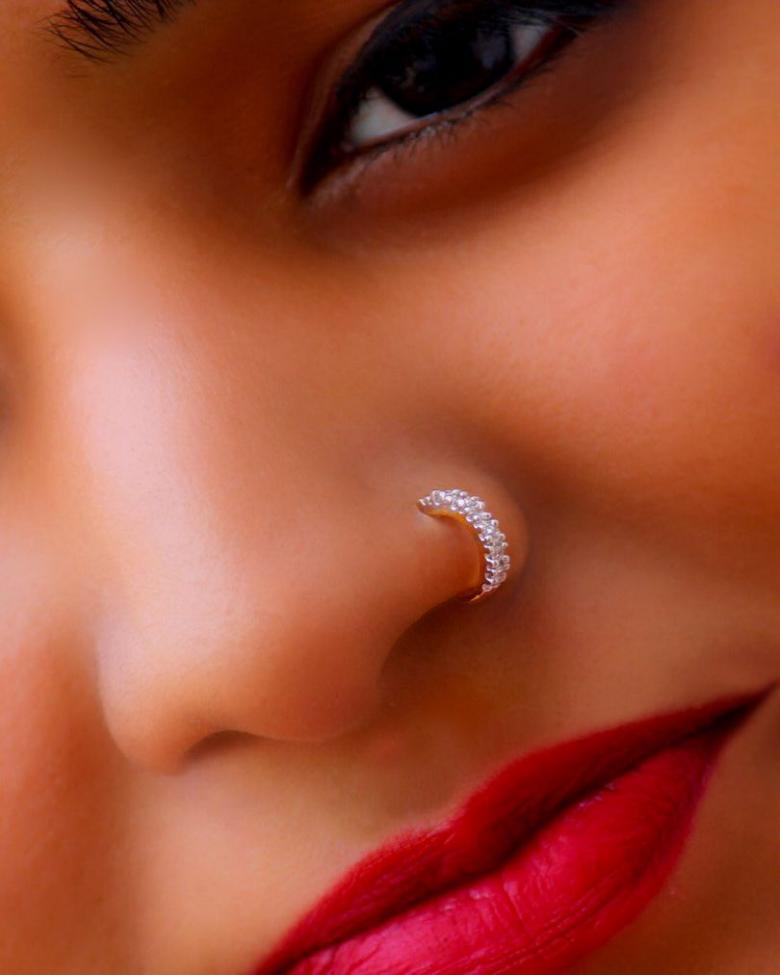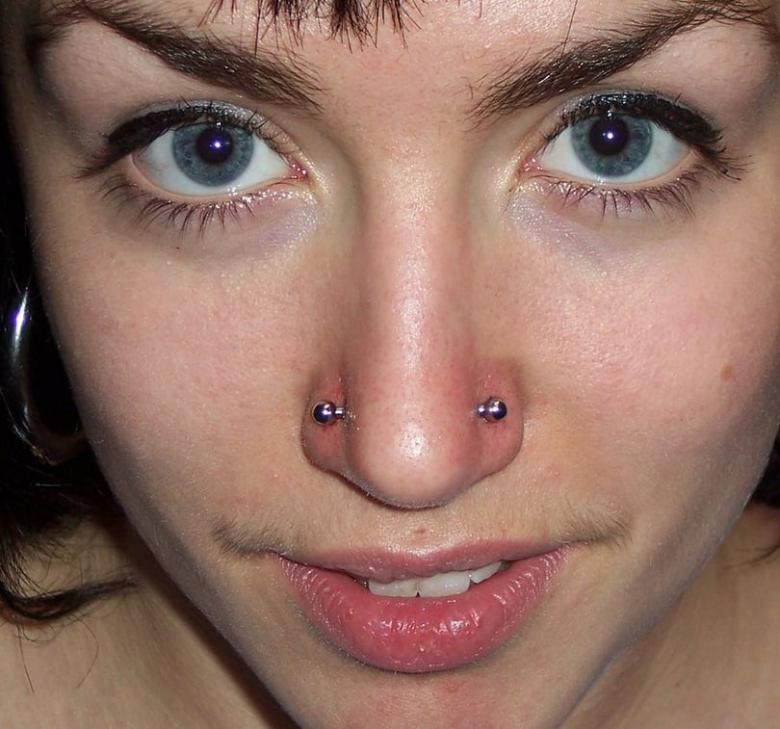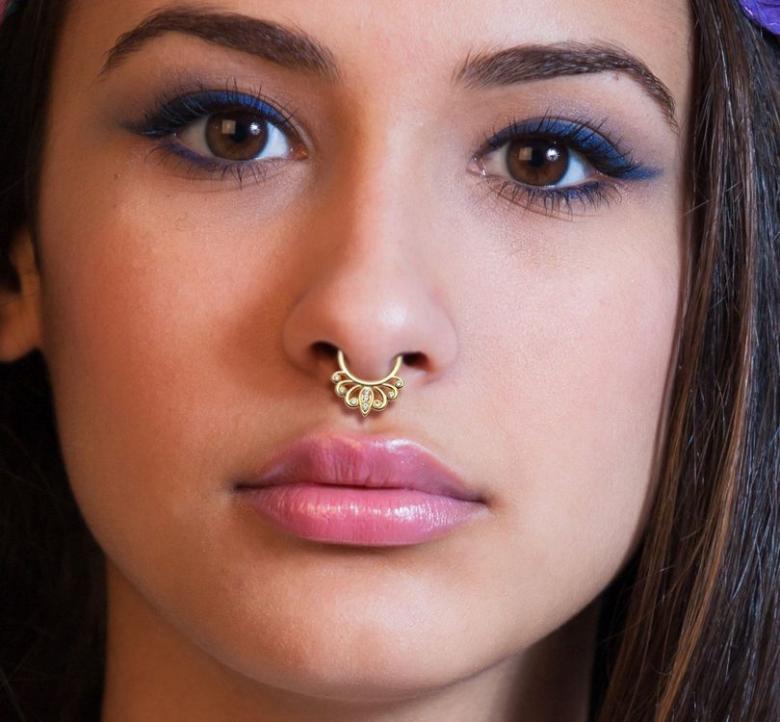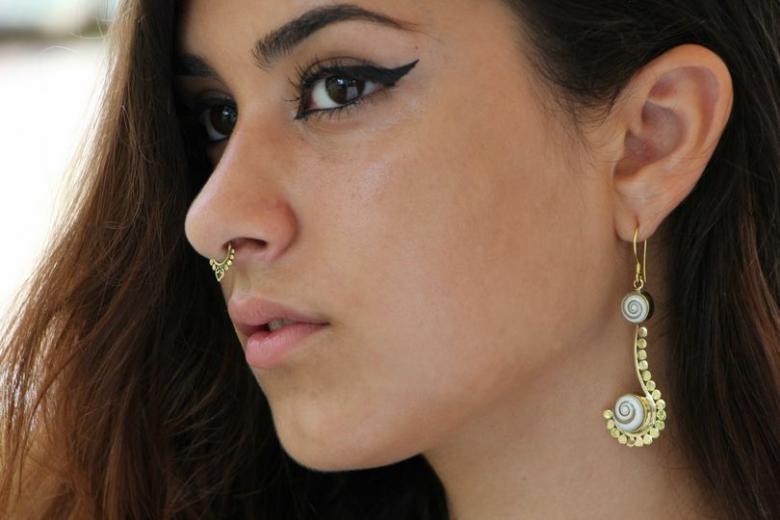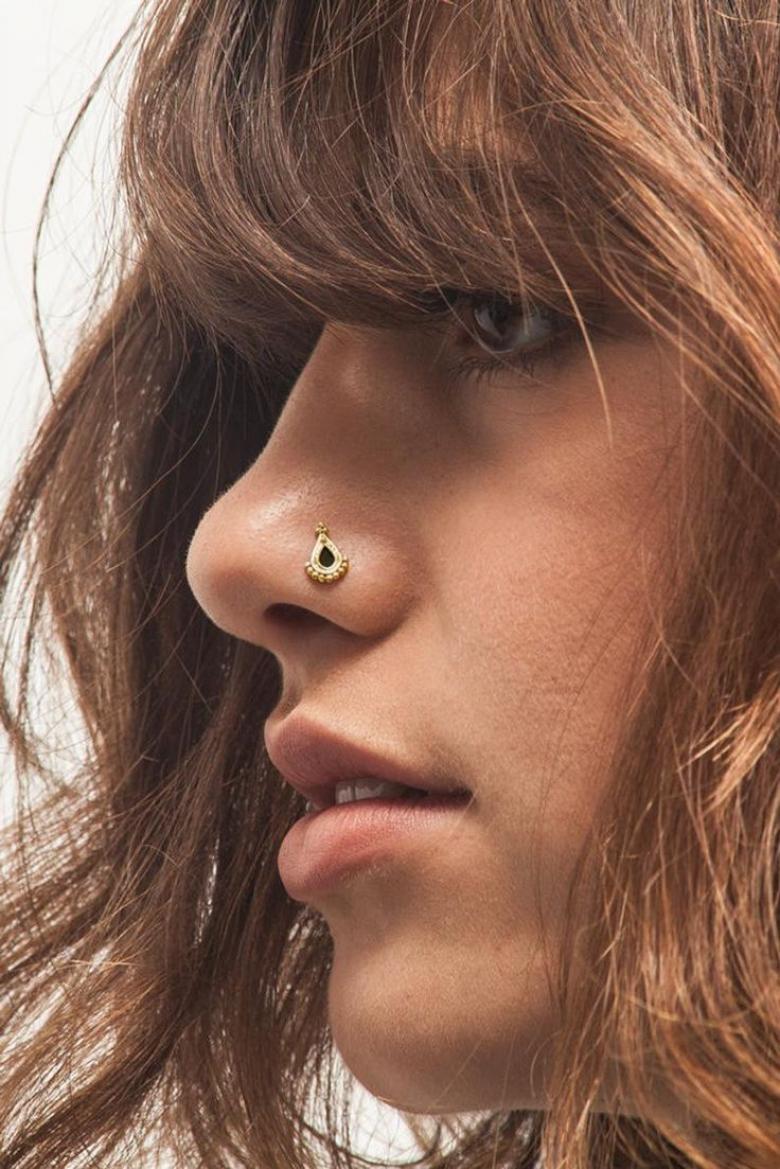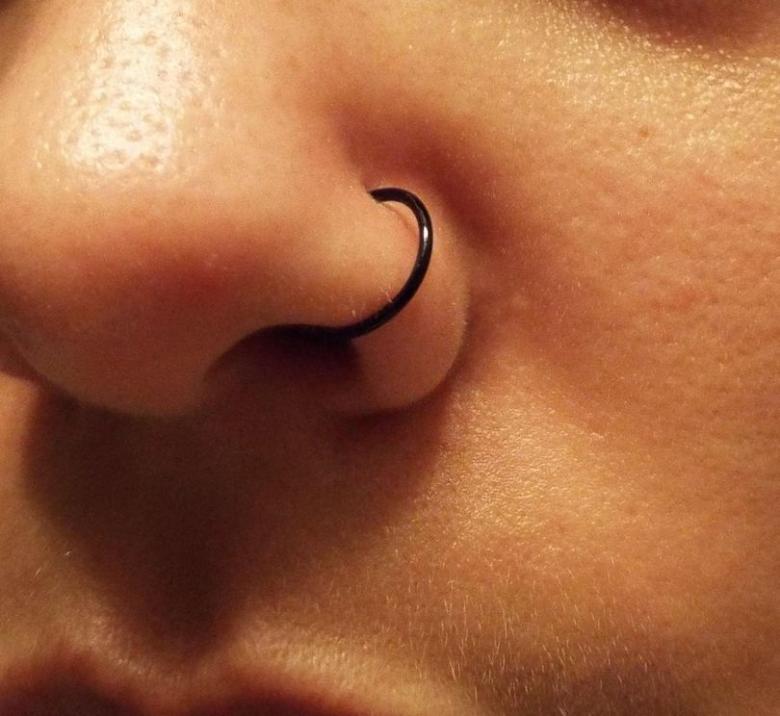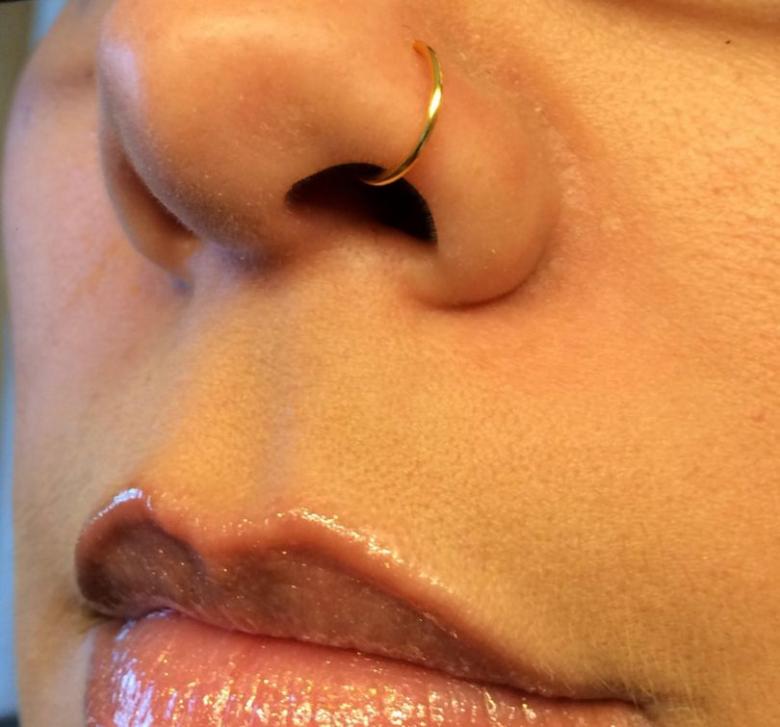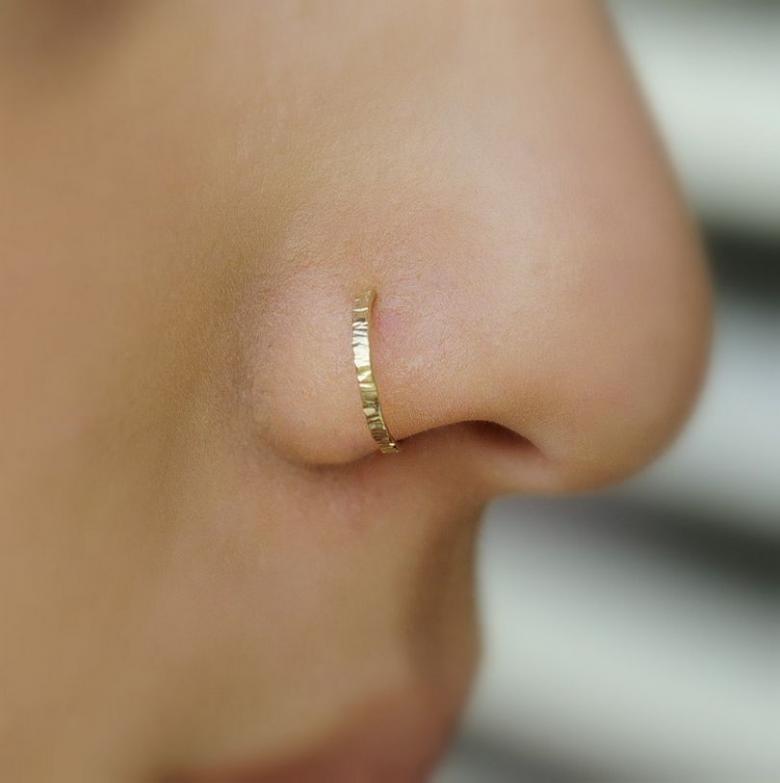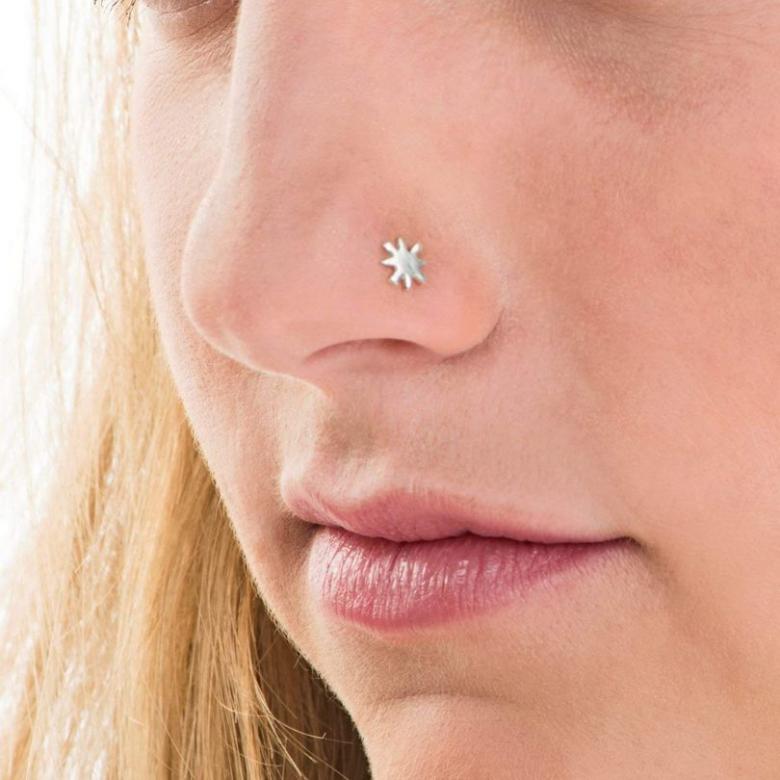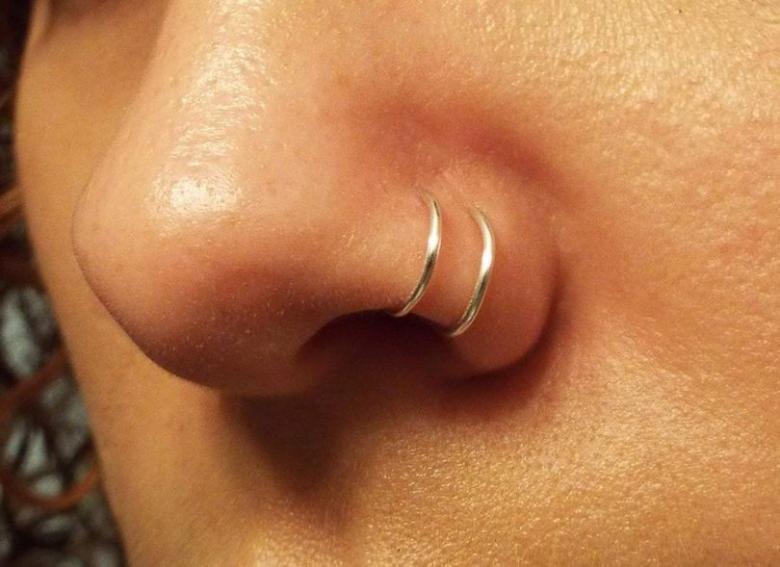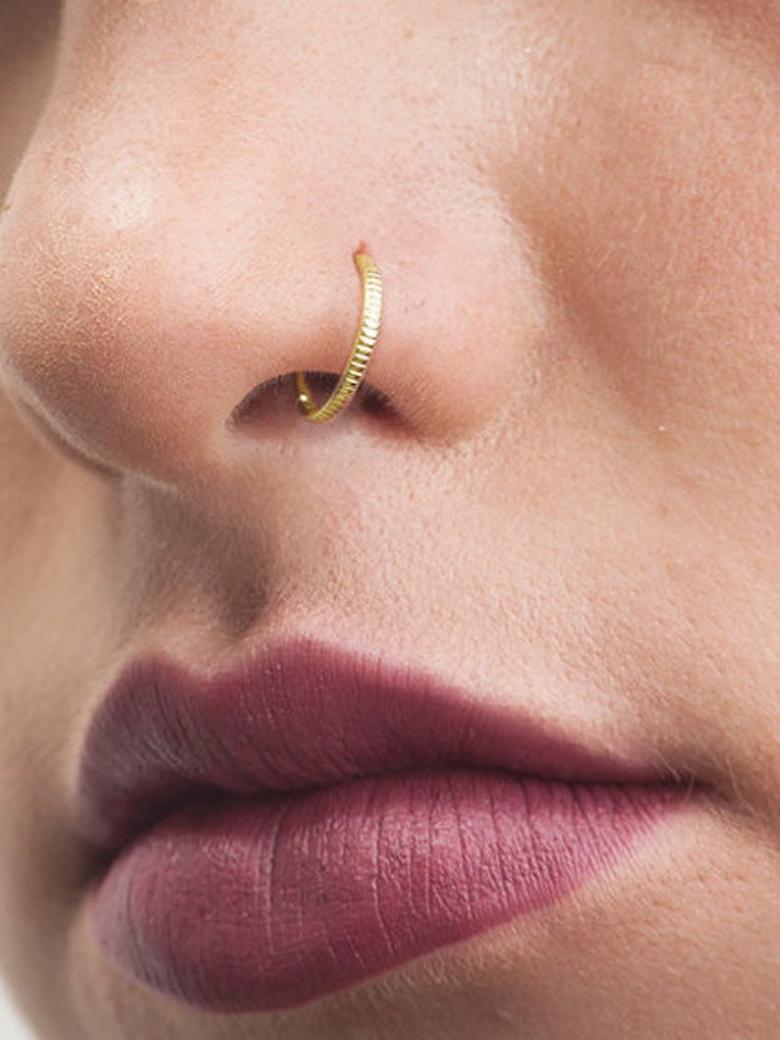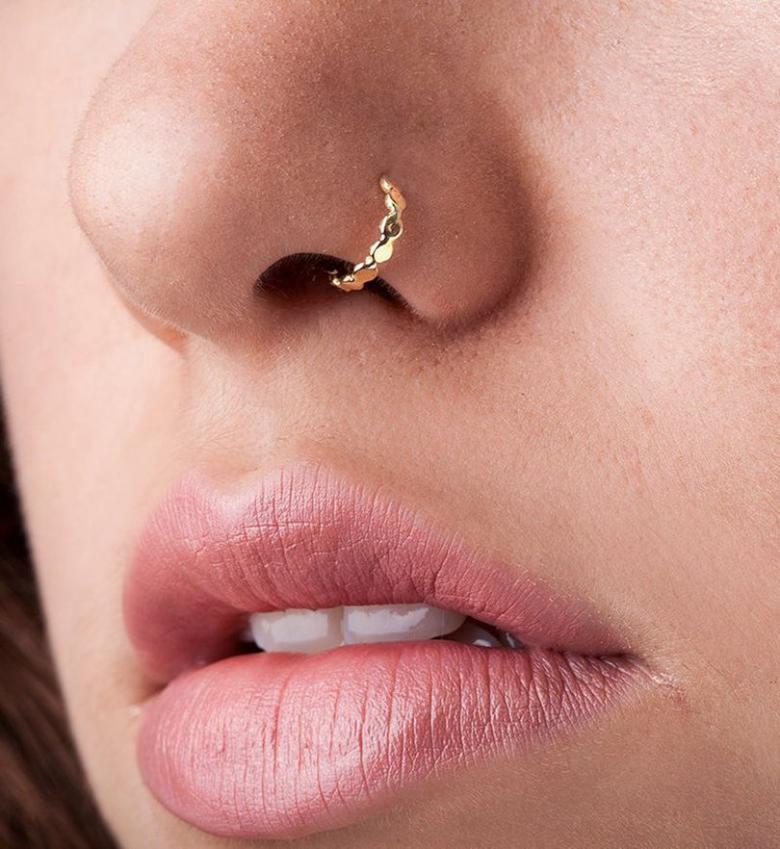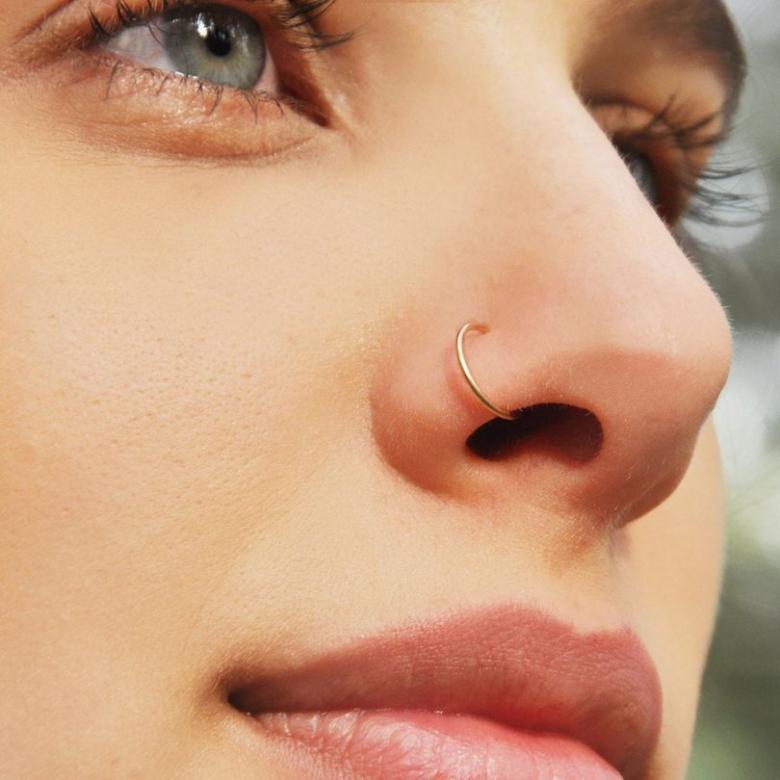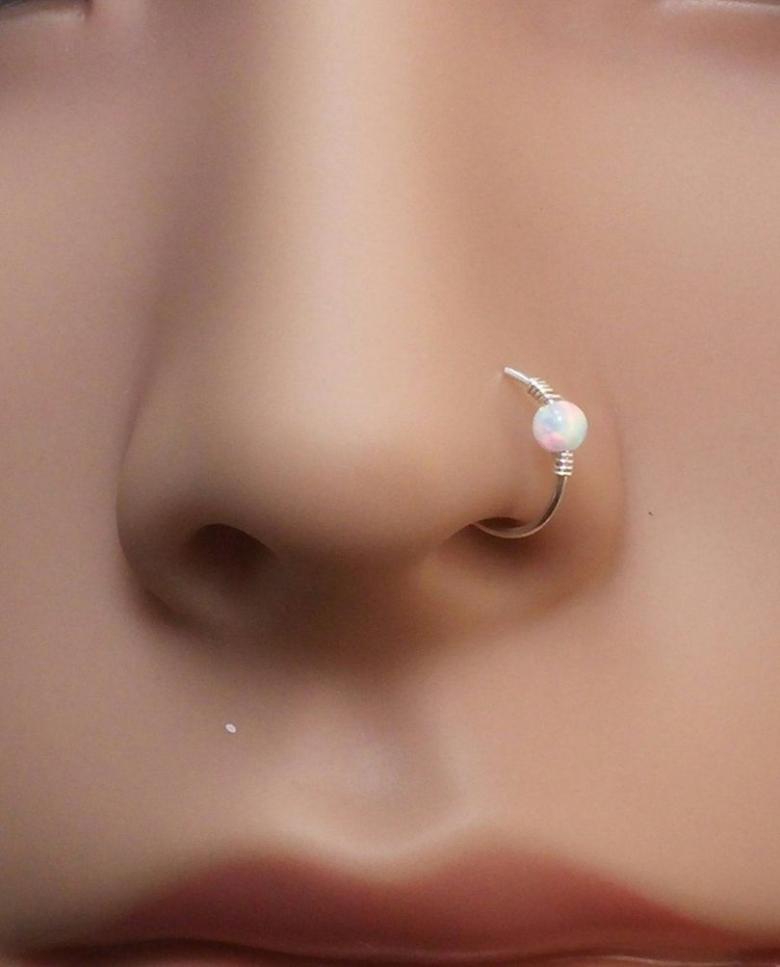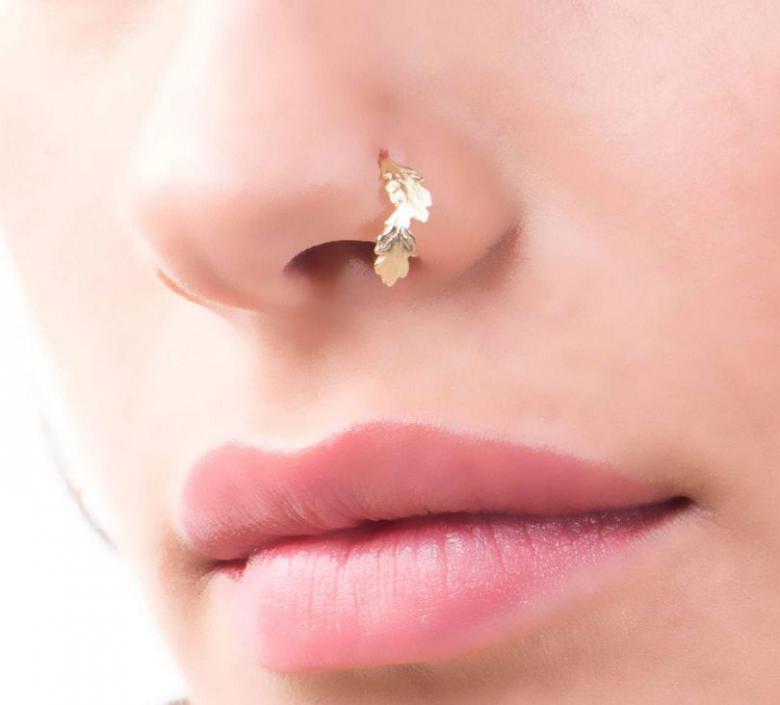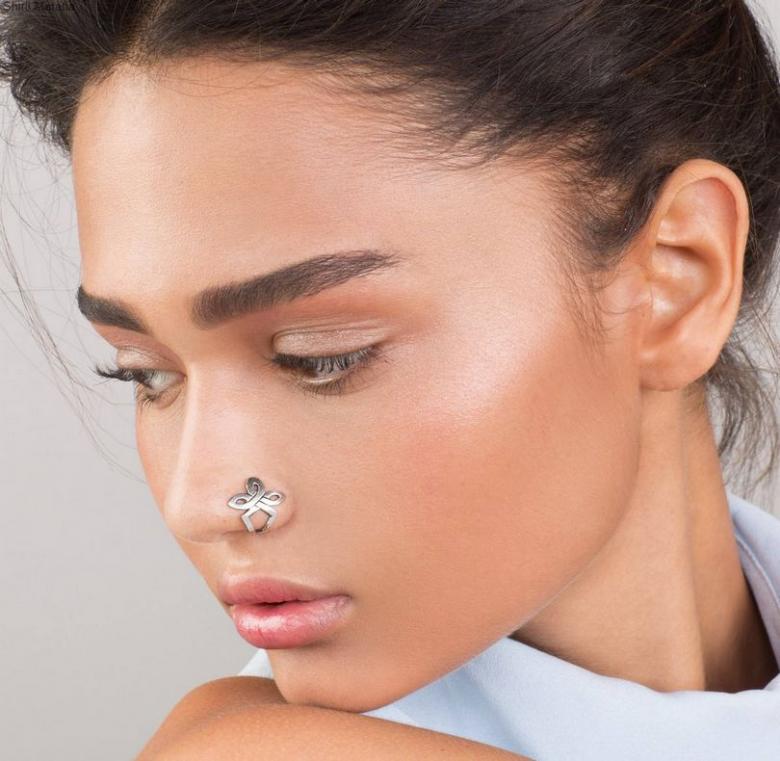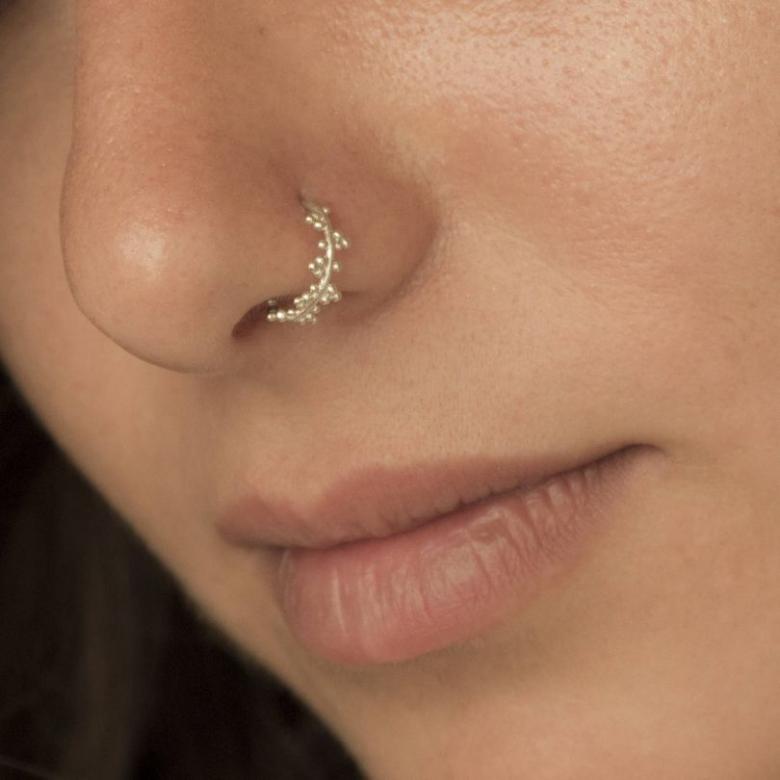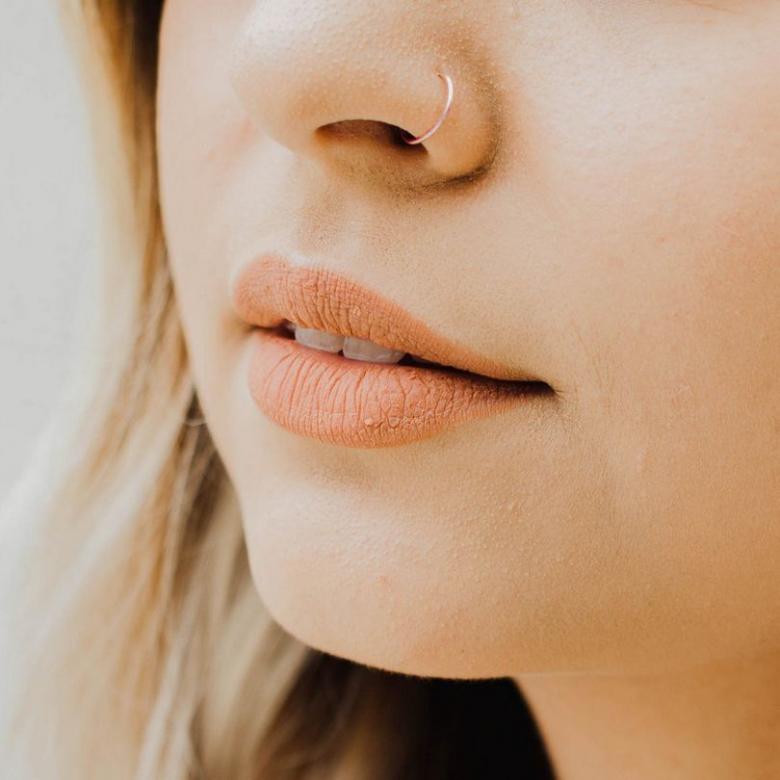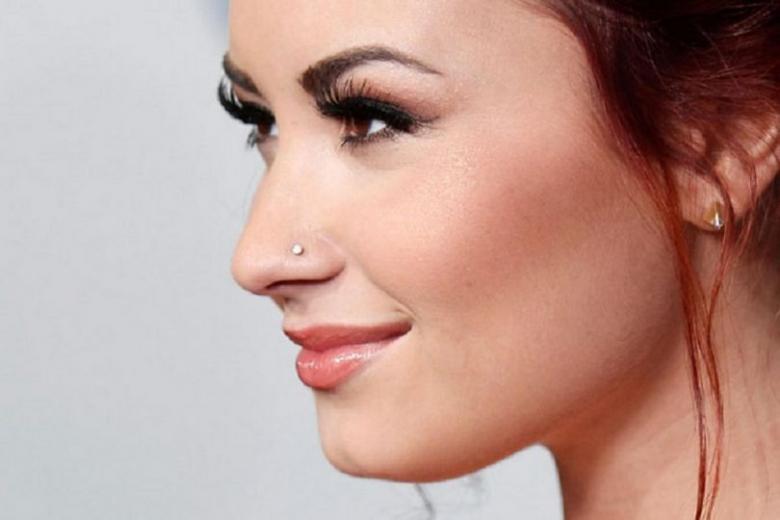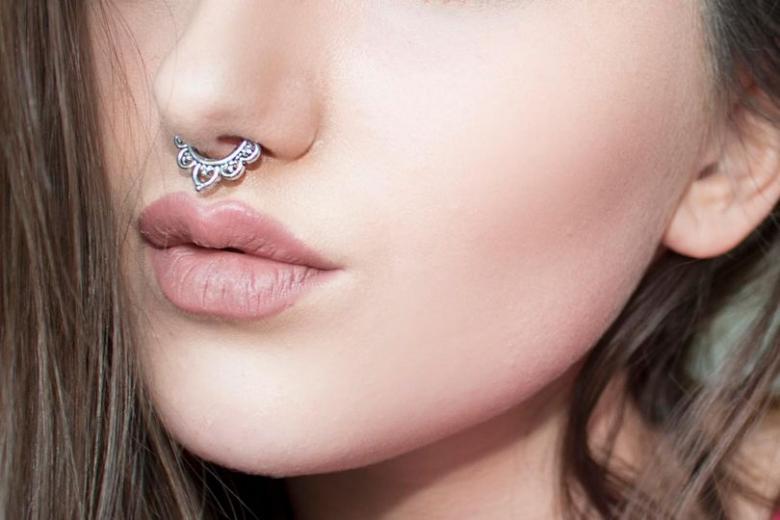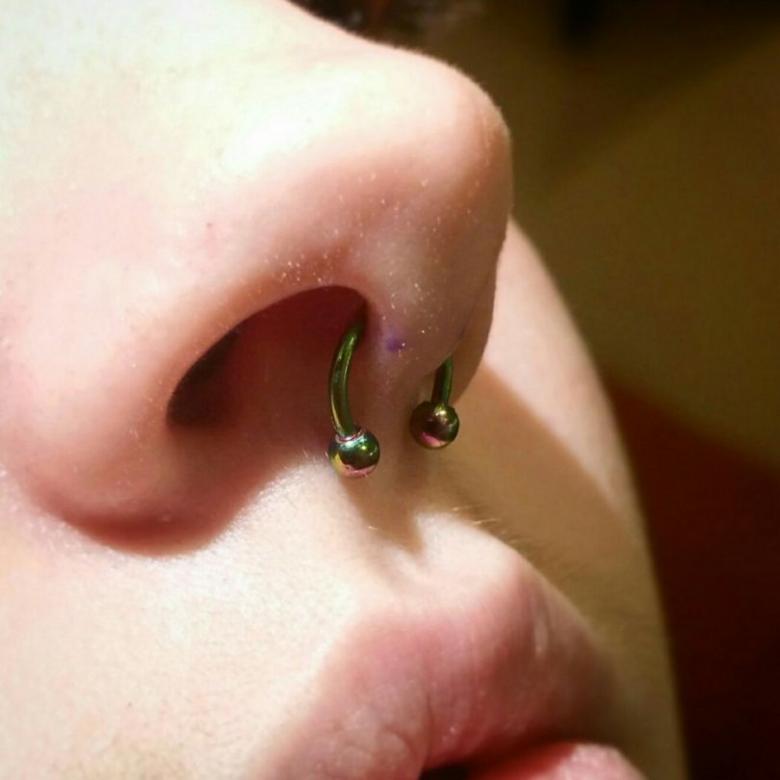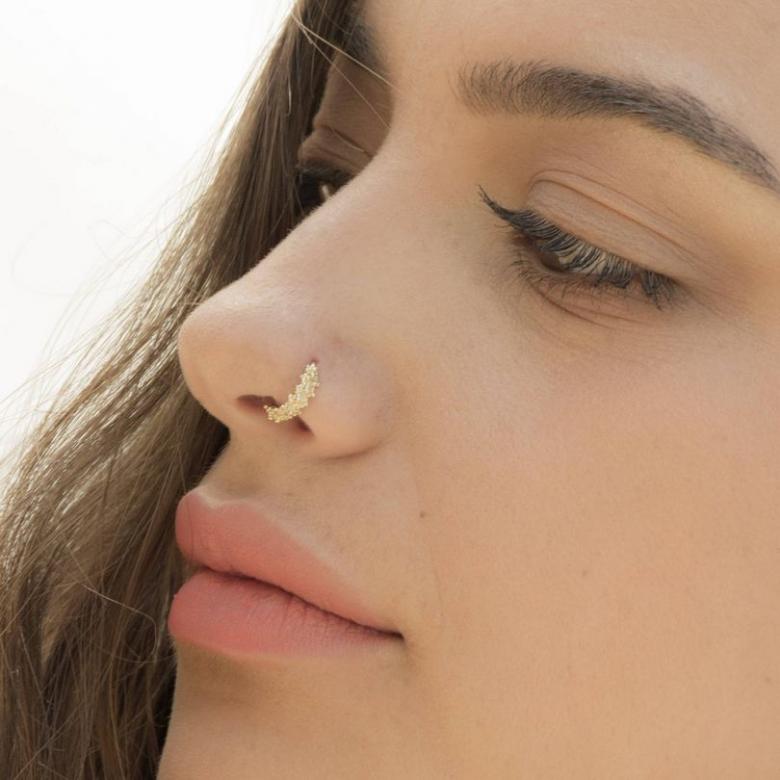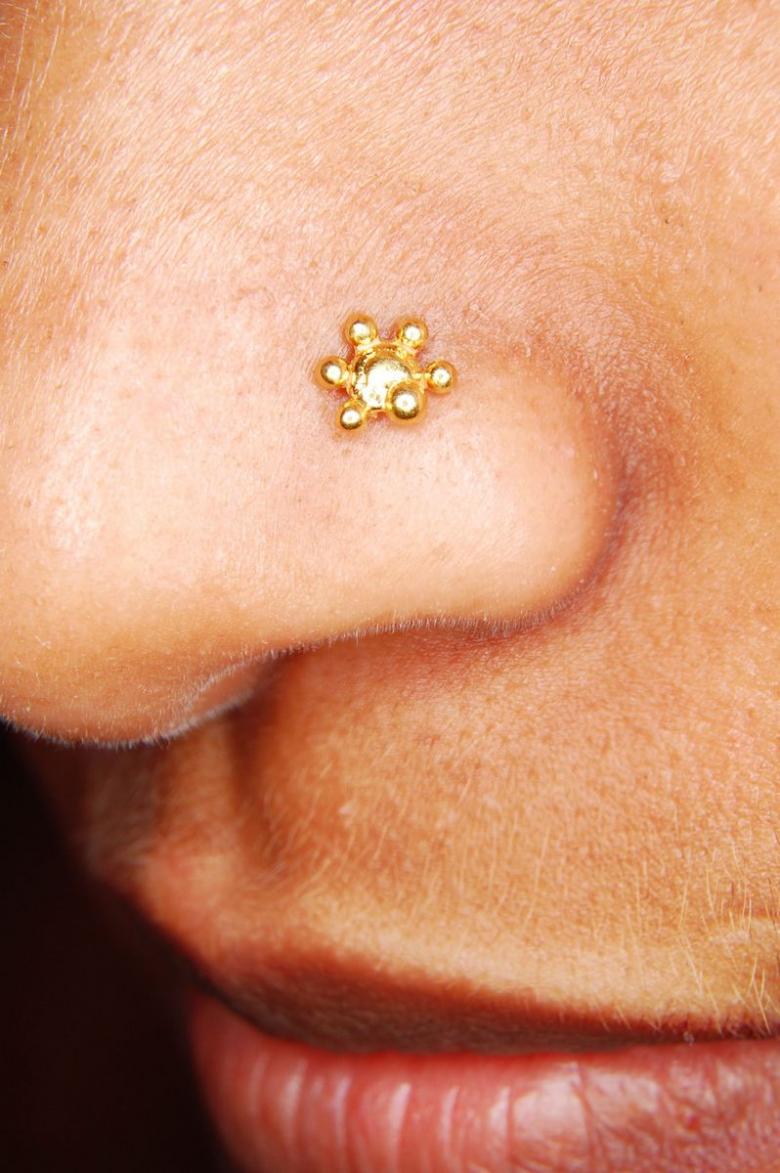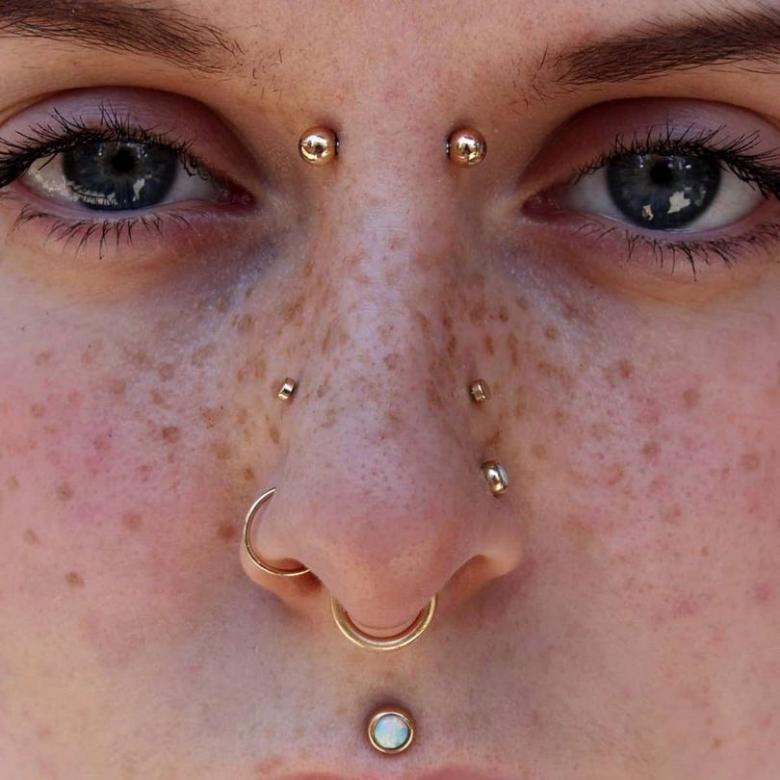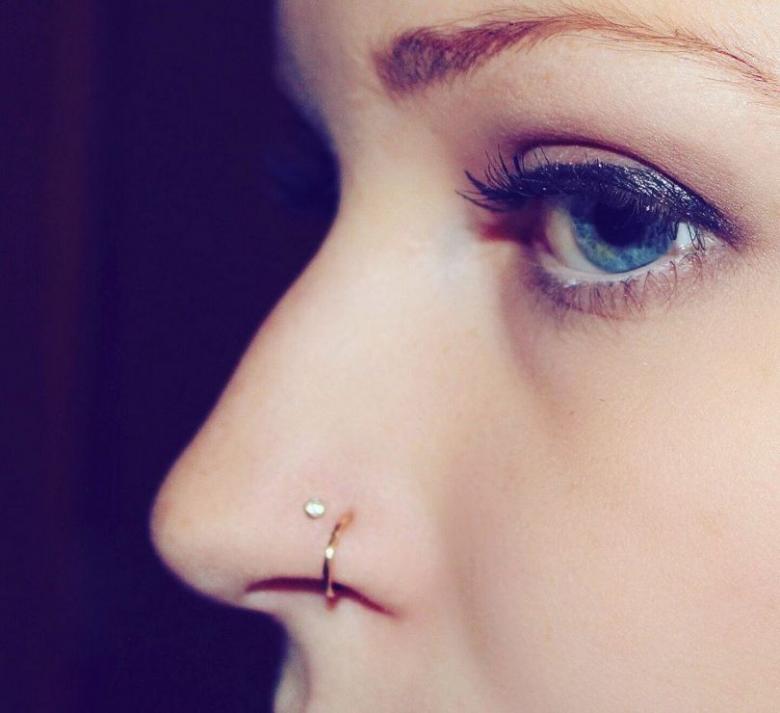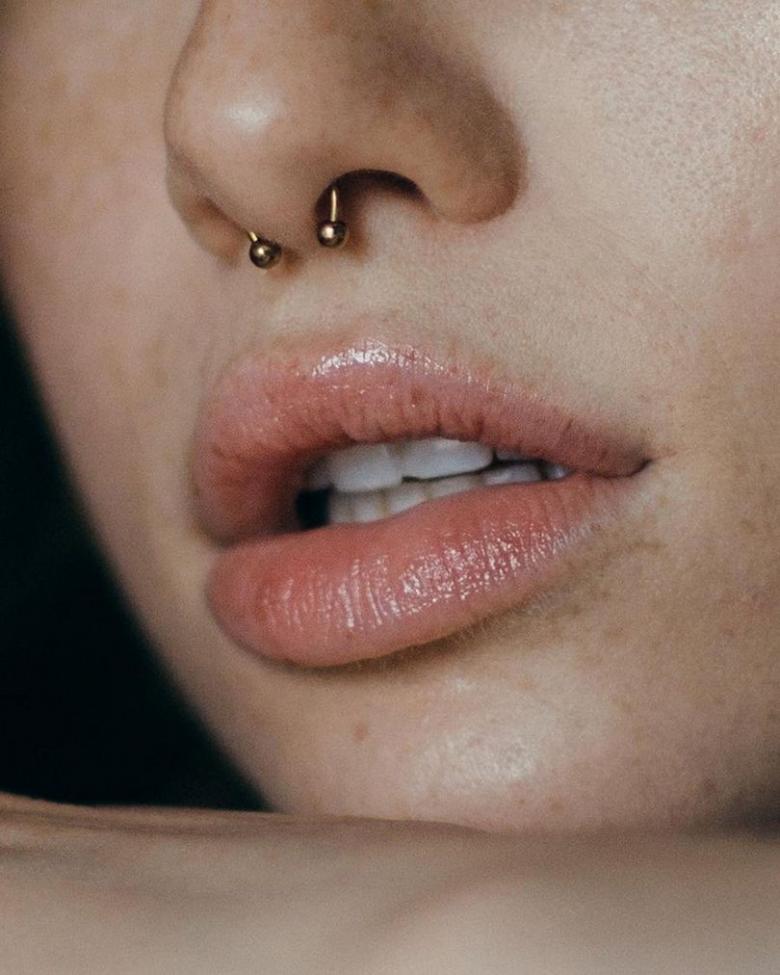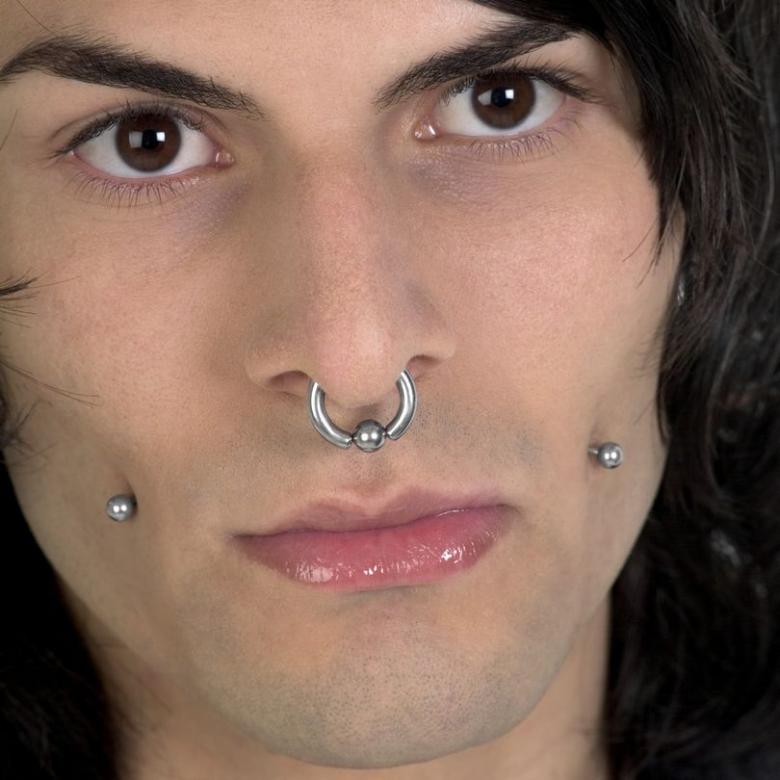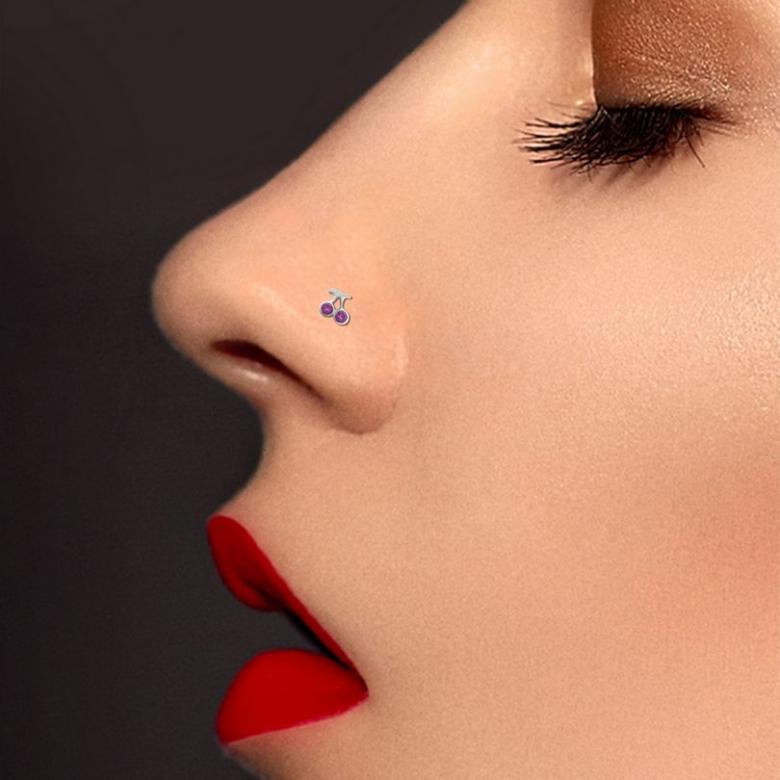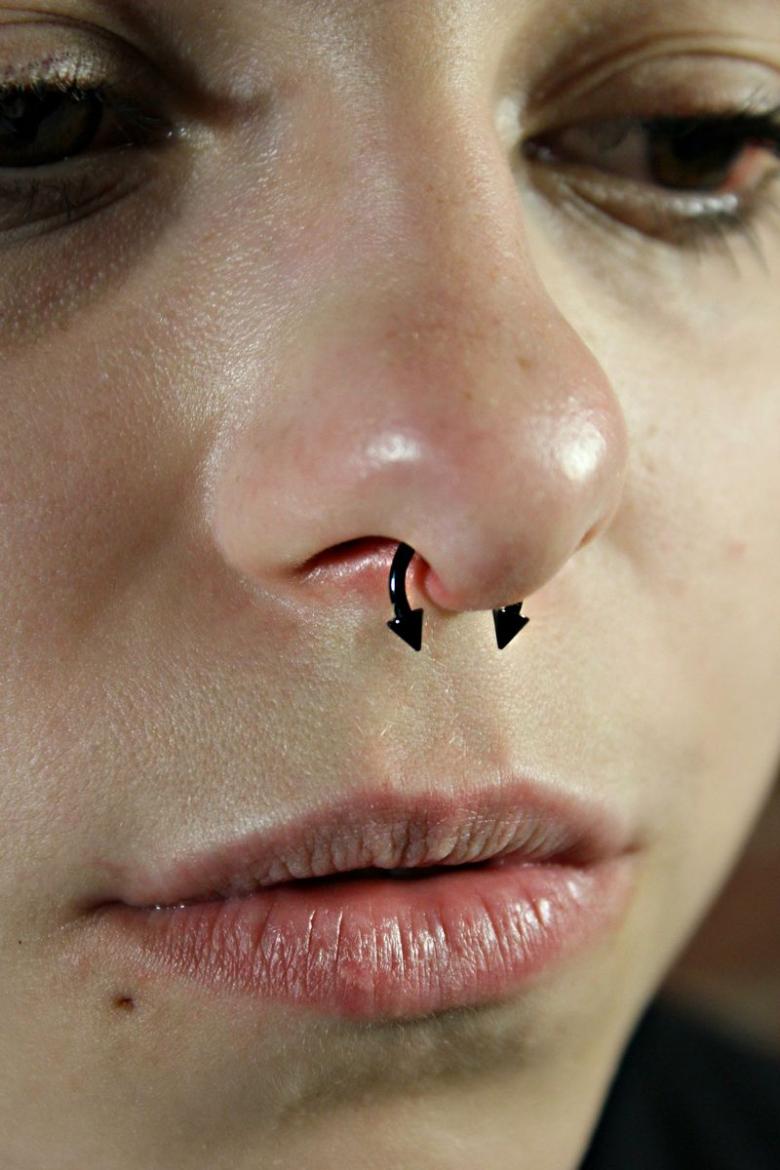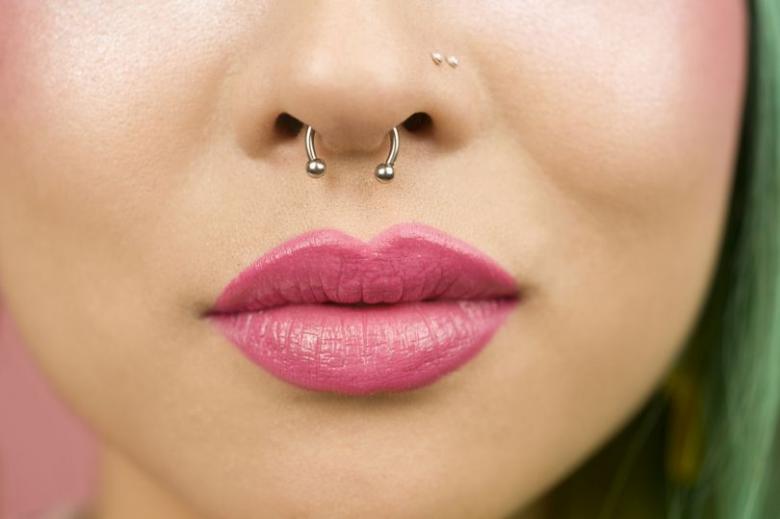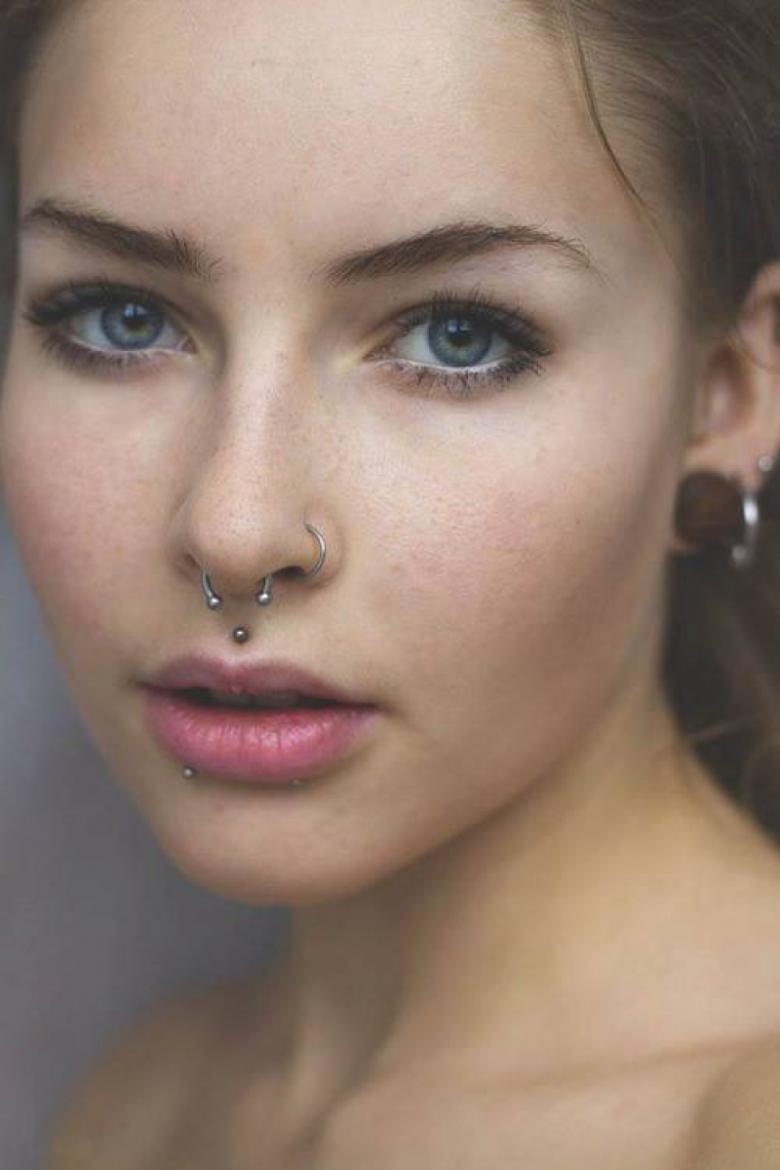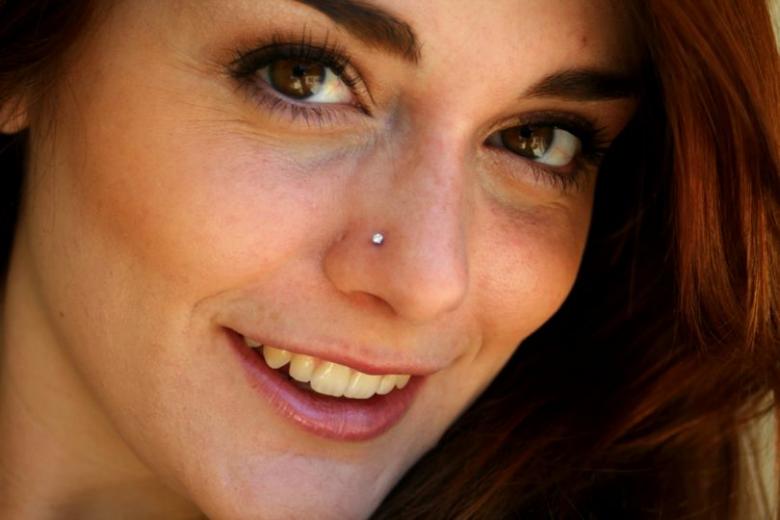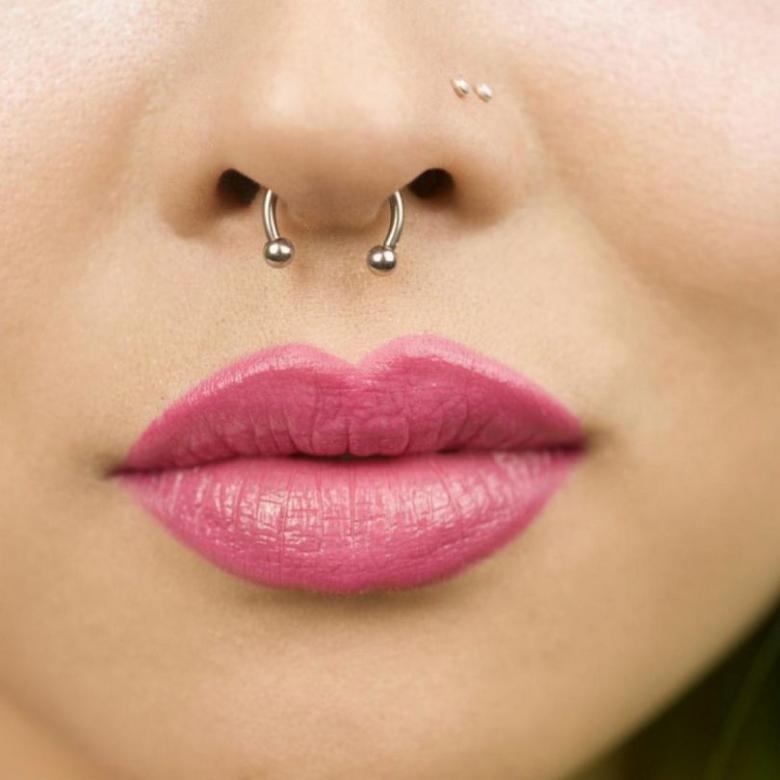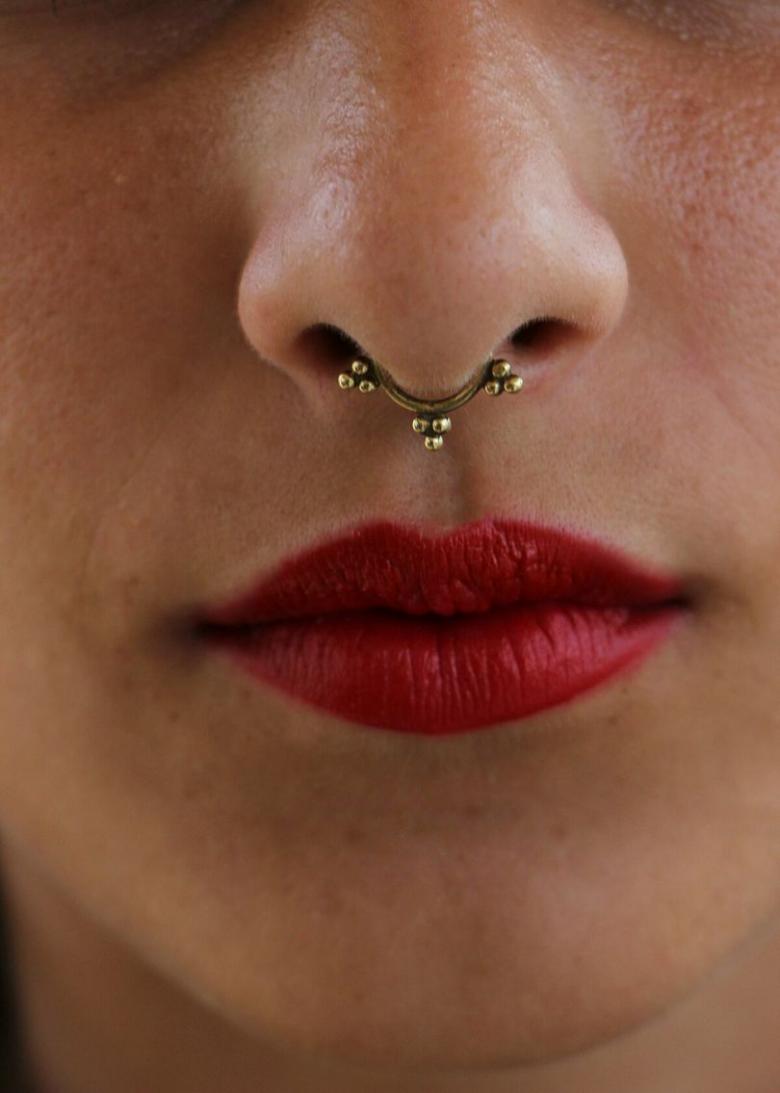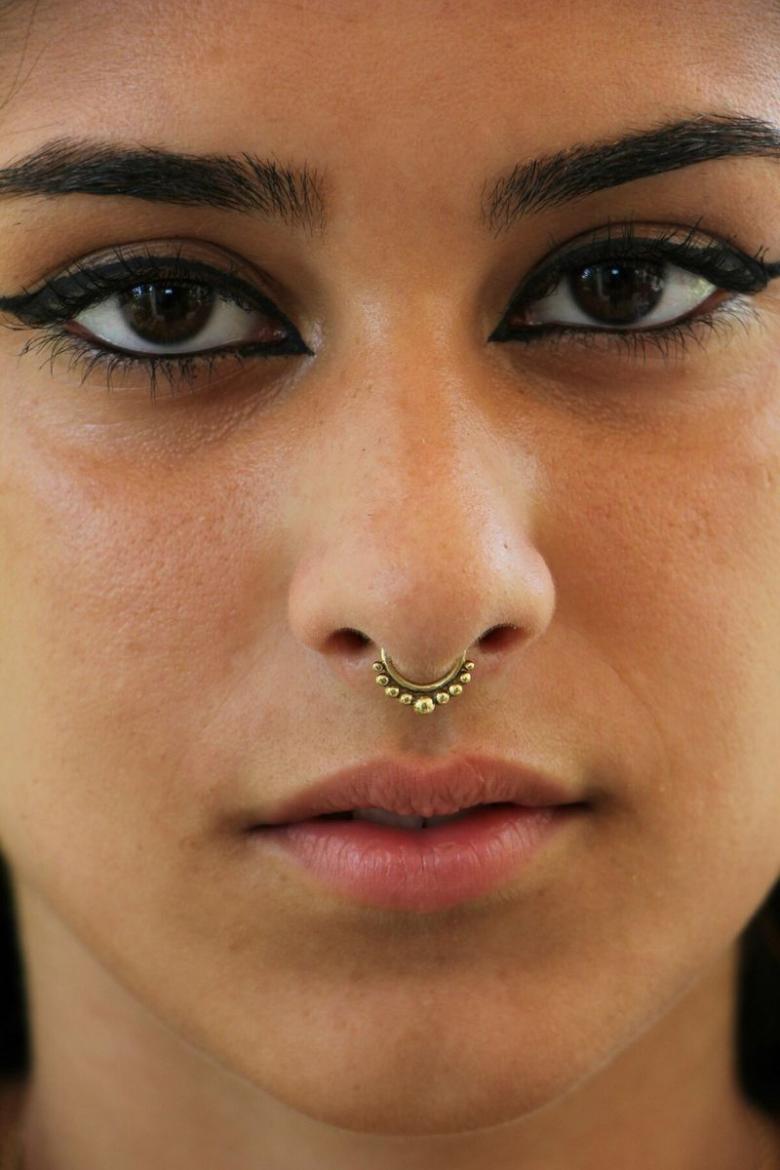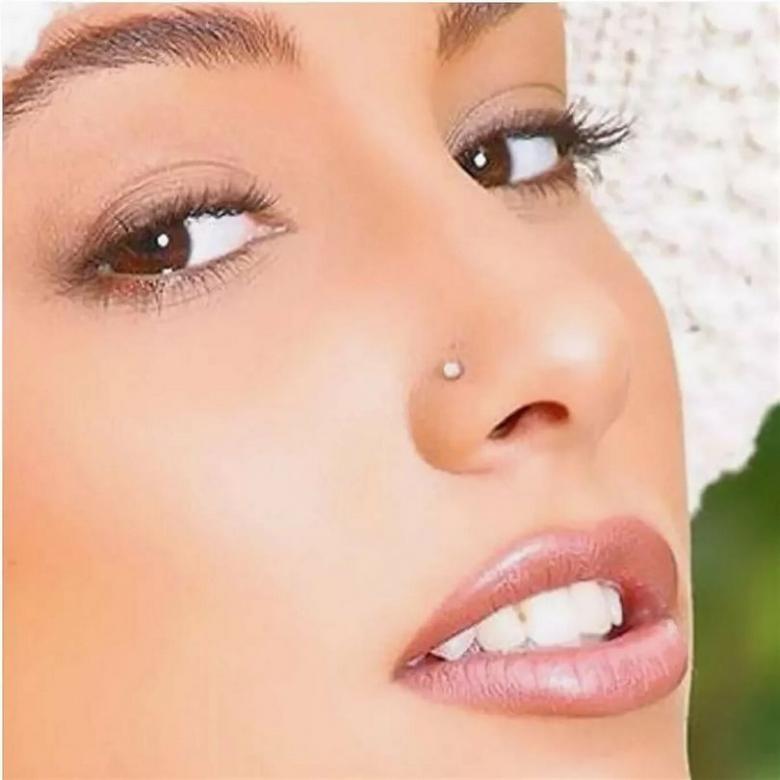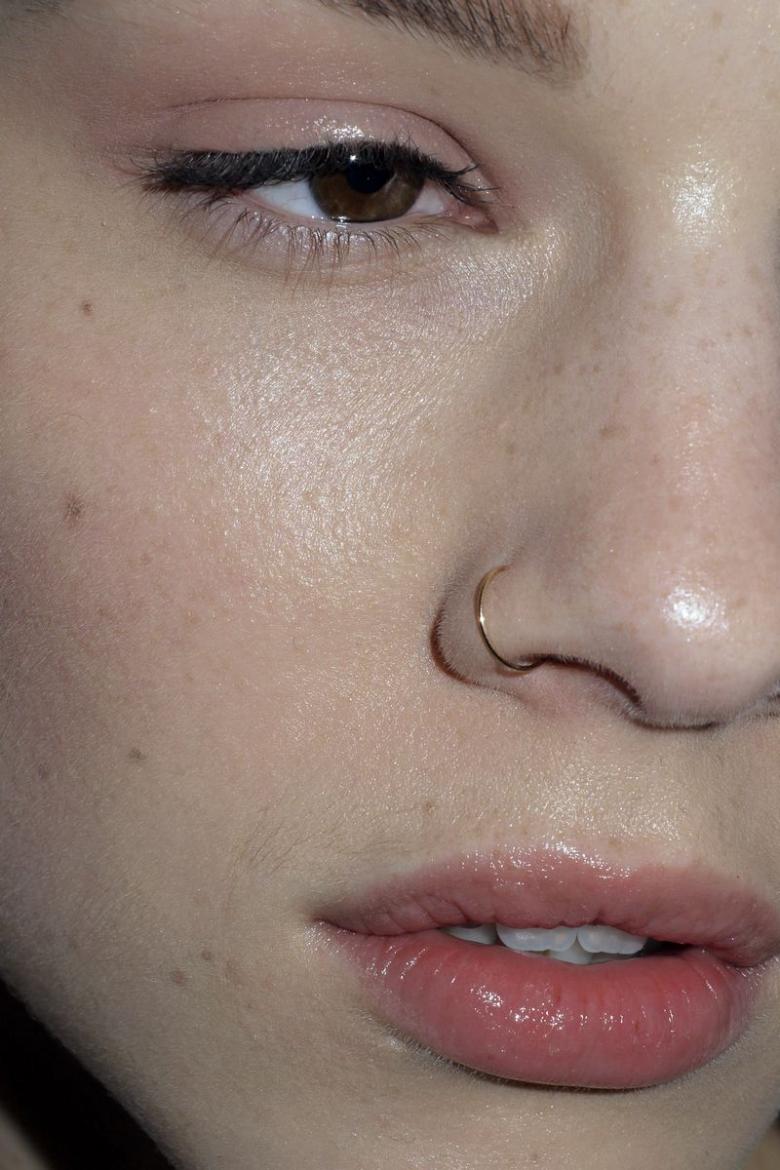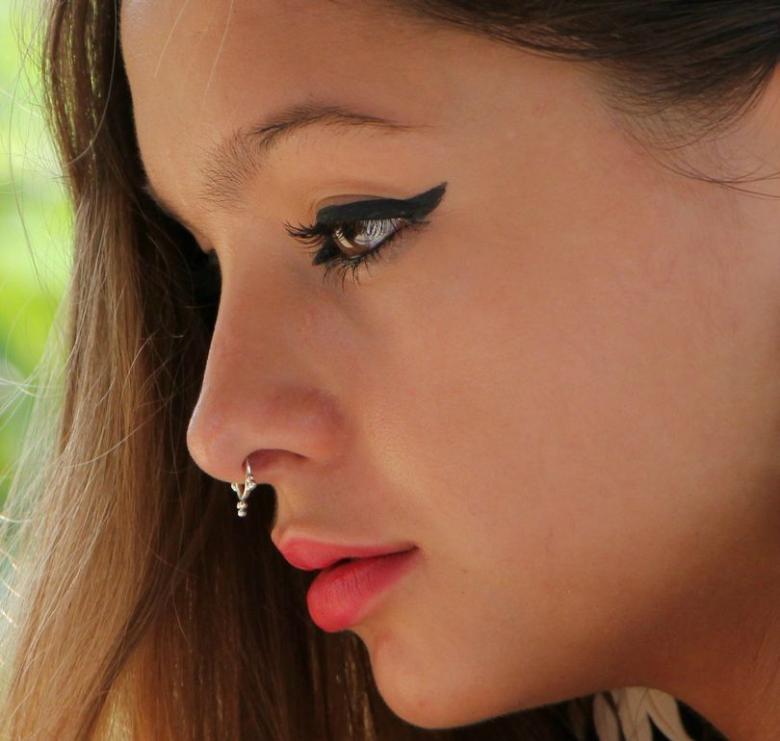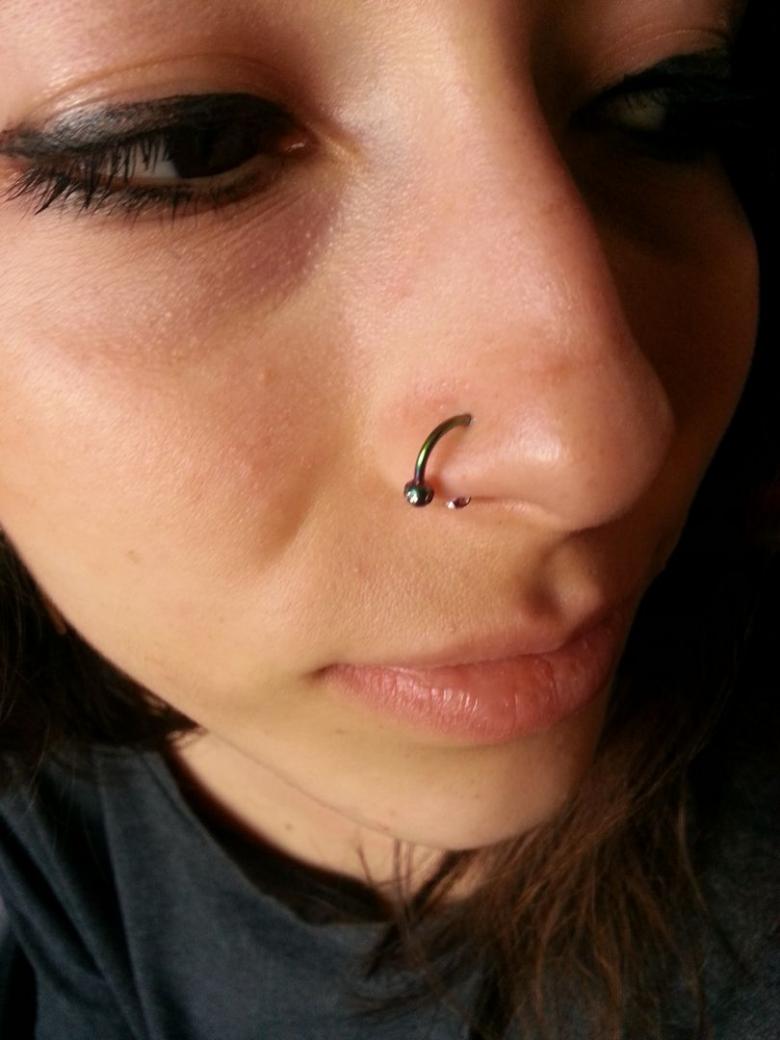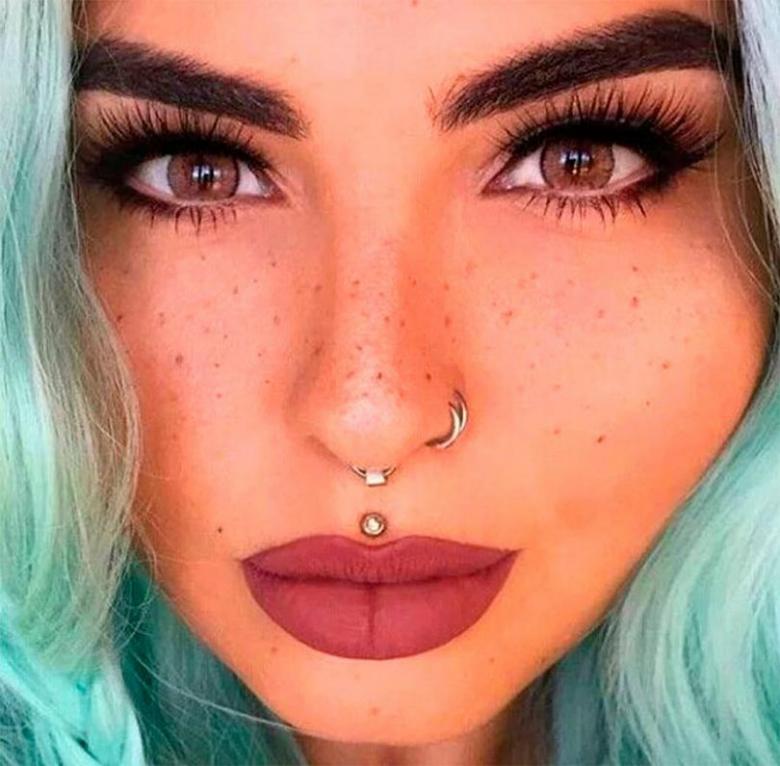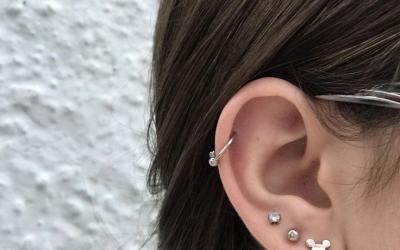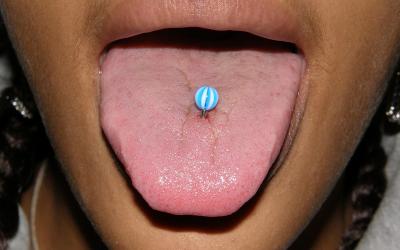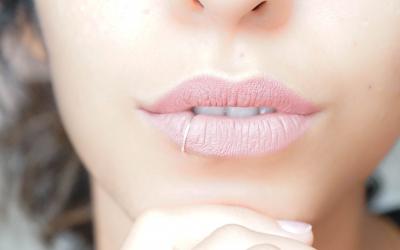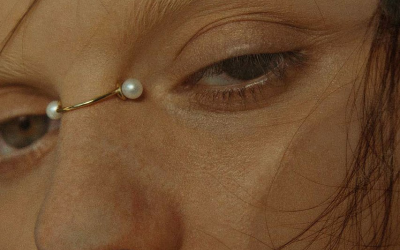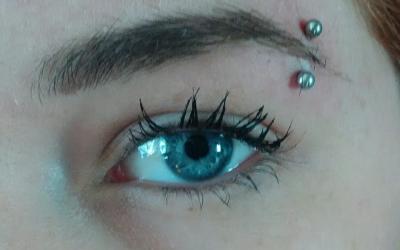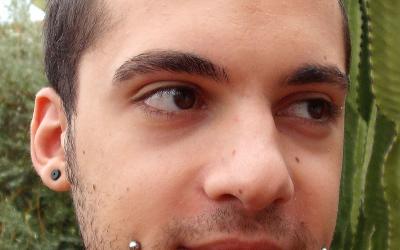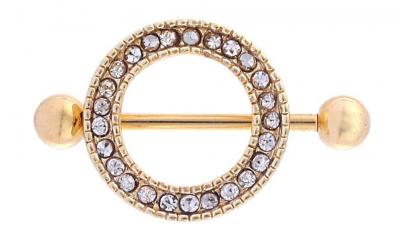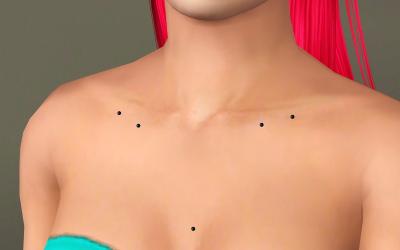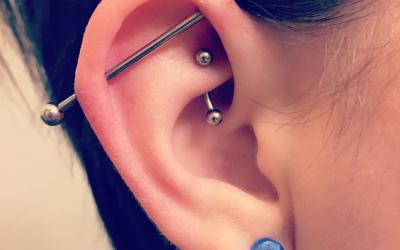Nose Piercing - types, complexity and features, selection of jewelry, care and healing, photos of work
Nose is one of the most common places for piercing. Varieties, complexities and features - gathered the most valuable information in one article.
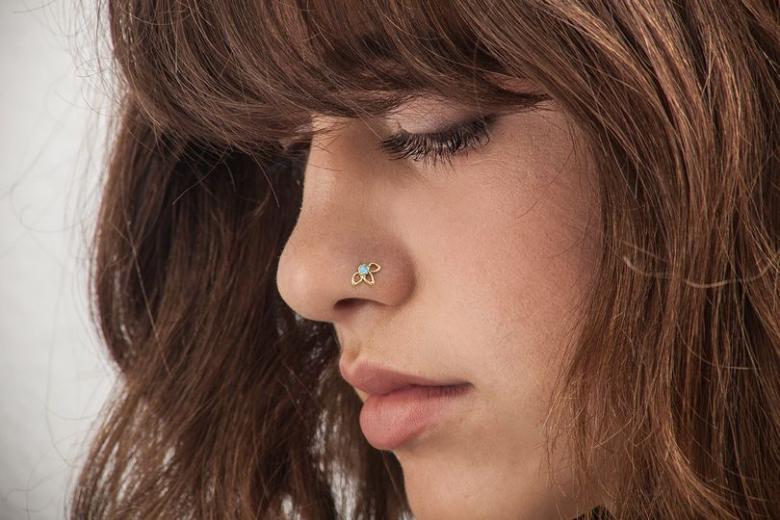
One of the reasons for the popularity of nose piercing is its relative painlessness and versatility. It is suitable for almost everyone, will perfectly complement any image and add your own flair. If the thought of a nose piercing occurred to you, you should prepare in advance. Decide on the decoration, the view, tune in to the procedure.
Types of nose piercings
There are several types of this piercing. Each has its own name and is characterized by a specific location:
- Wing of the nose;
- Septum;
- Bridge;
- Septril;
- Austin Bar.
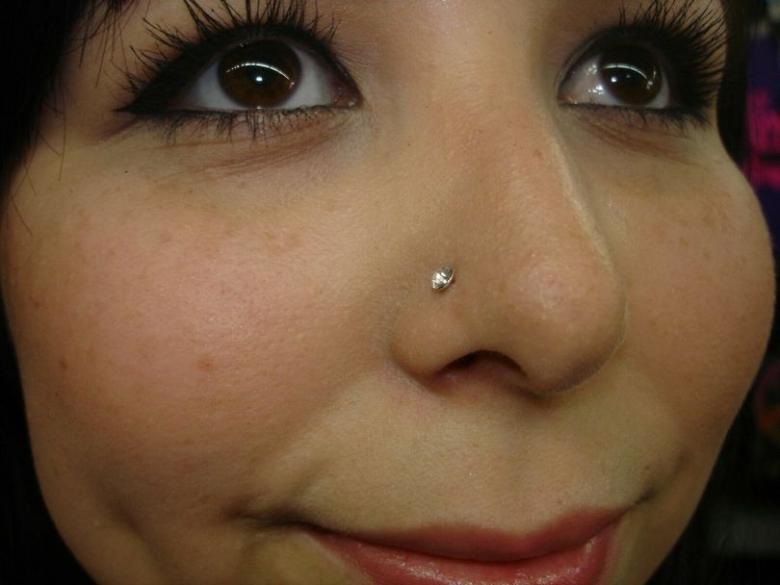
Nose wing piercing is the most common option. It is the least painful, is a kind of classic in the piercing environment, heals completely 4-6 months. As a rule, jewelry of this type are snails, rings and carnations (not recommended). There are several modifications of this piercing - symmetrical (both wings pierced mirror) or double (two side by side).
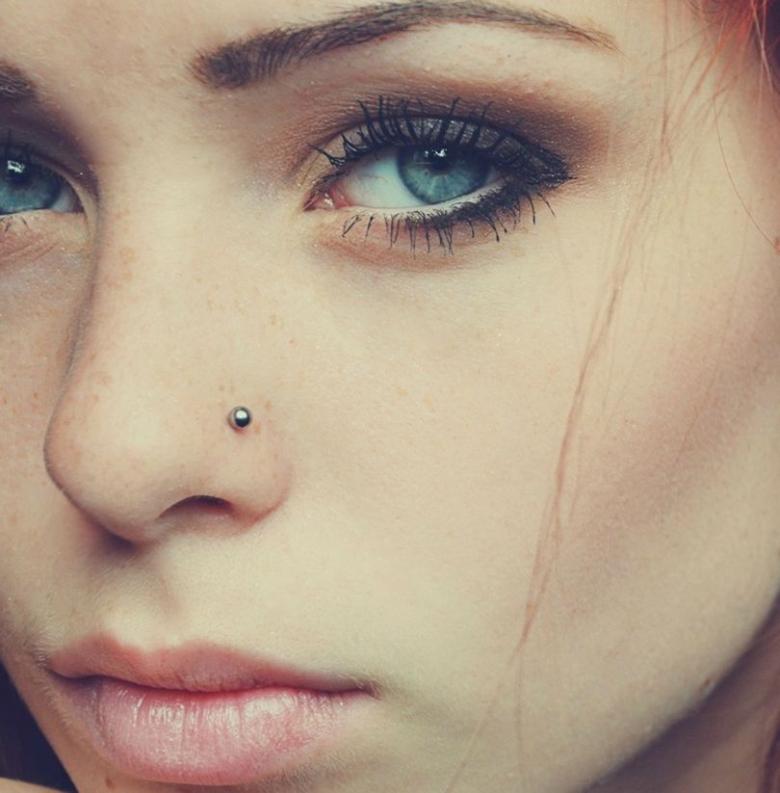
Septum or septum piercing. In the early 10's was at the peak of popularity, so it actively shares the primacy with the wing piercing. Complete healing takes up to 8 months. The part of the nose that connects the nostrils, which is called the columella, is pierced. Here it is important to choose an experienced craftsman who will pierce the skin and not the cartilage, otherwise the healing will take longer.
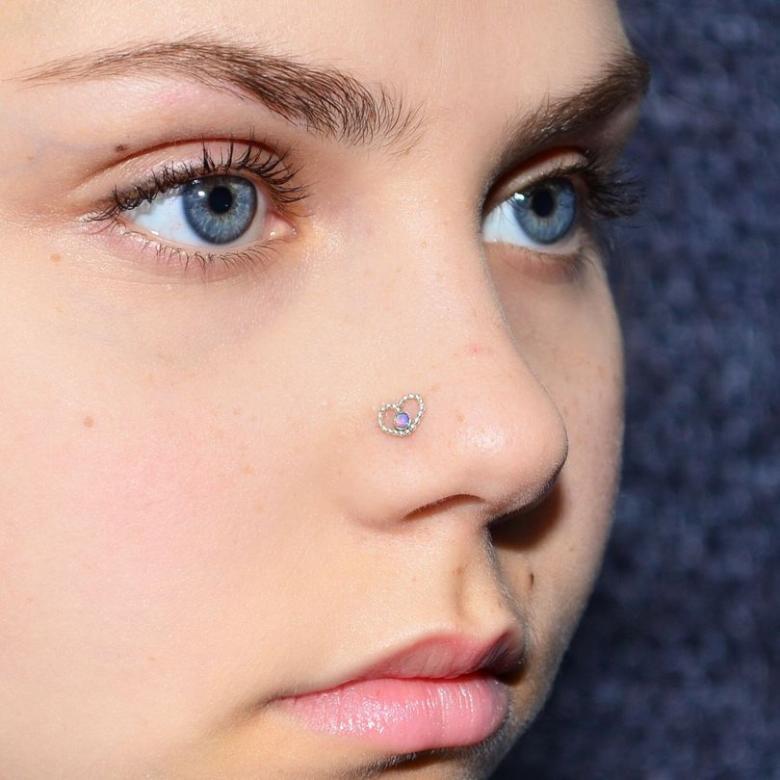
The bridge or bridge heals slightly longer than the septum, up to 10 months. It got its name because of its appearance - the rod is placed across the bridge of the nose at eye level. This piercing is specific and is not suitable for everyone. In people with thin skin, the jewel may not take root or migrate, which is very painful and leads to complications. There is a risk of hitting the eye nerve, which runs in this part of the face and impairing vision.
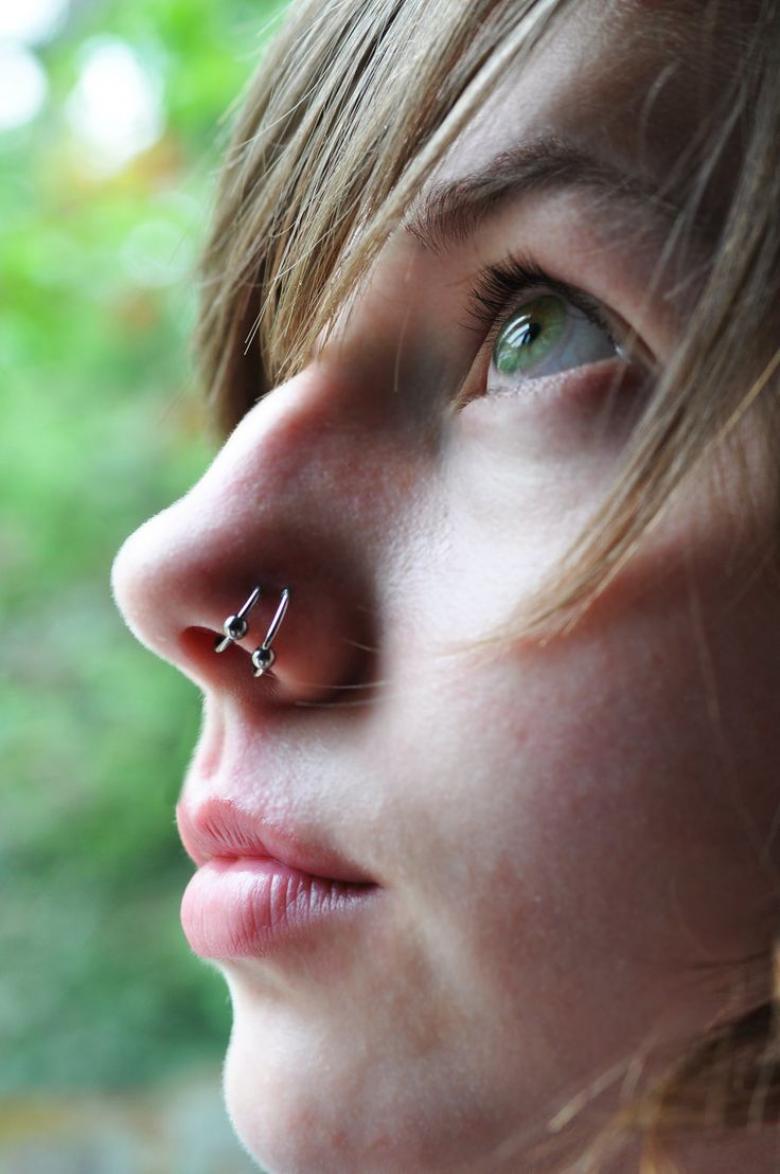
Septril is the most complicated type. In this type of piercing, the earring is led out of the columella (nasal septum) to the lower part of the nasal tip. It heals like a septum.
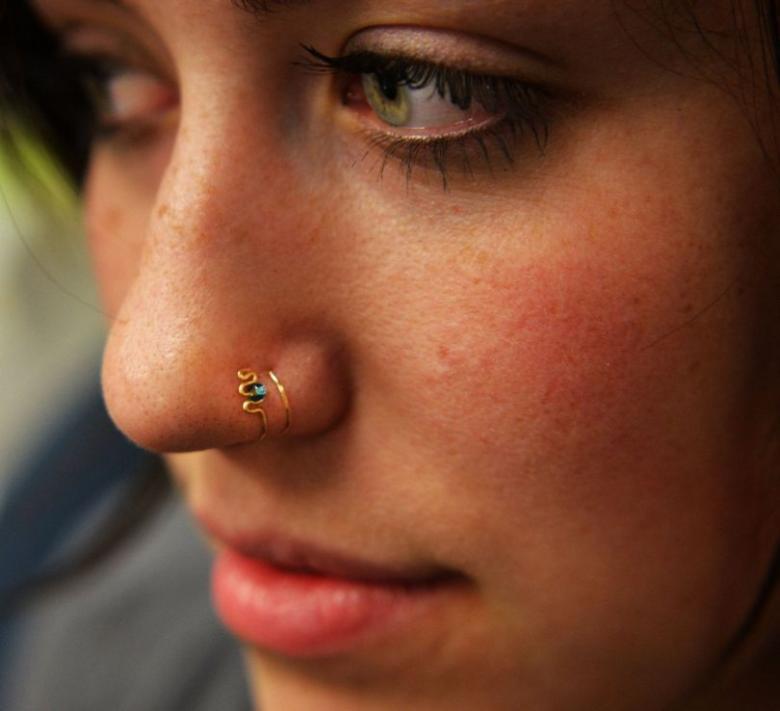
Austin Bar. This type is the most painful and most problematic. Here, the earrings are placed symmetrically on the tip of the nose (or a single version - one earring through the tip from bottom to top). Masters in the studios mark it as one of the most complex types of piercings, so it is the most expensive in price.
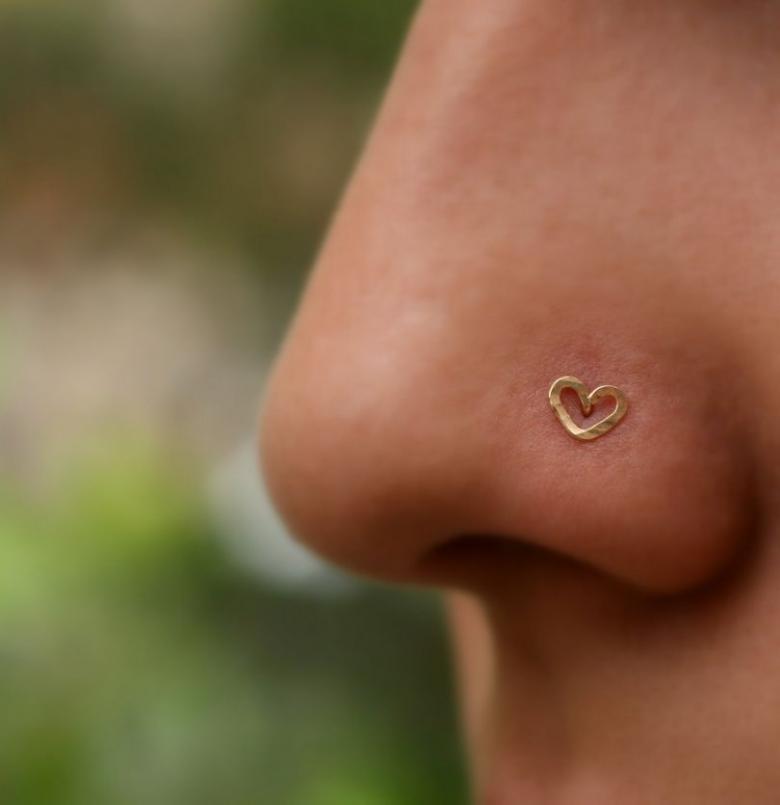
Selection of jewelry
It is very important to choose the right metal. Only surgical steel and titanium are considered for primary jewelry. Sometimes bioplastic and soft acrylic are used. The choice of these materials is due to their resistance to oxidation, lack of allergic reactions of the body and convenience in healing.
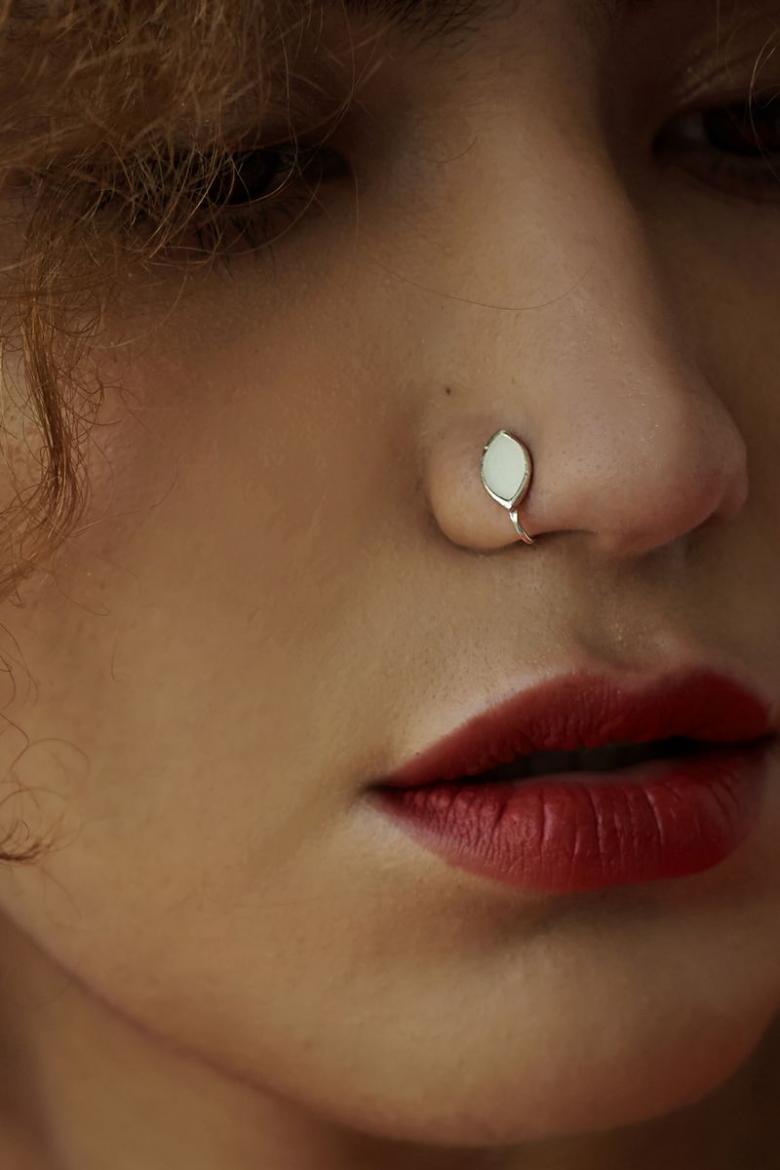
If you strongly want to wear expensive jewelry, after a complete healing, you can think about buying a piece of jewelry materials. For primary jewelry, such materials are categorically not suitable. Even in a fully formed canal, experts recommend wearing jewelry no more than two days in a row.

Gold (including white gold) is usually made of 585 (58.5% of the metal itself), and the rest are impurities that can cause allergic reactions and inflammation. Plus, the hallmark itself can irritate the piercing and it is recommended that you clean it up before wearing it. Silver is also allergenic and oxidized material. Also, manufacturers often do not respect the correct curves and length of the snail, which leads to discomfort when wearing it.
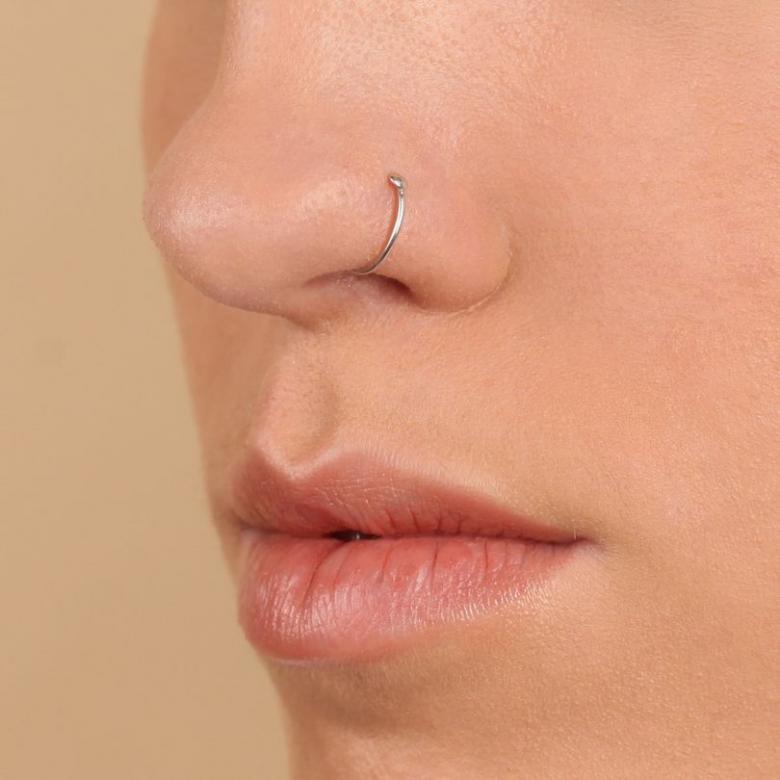
The jewelry itself, which is usually used in nose piercings come in several types: snail, ring, barbell, carnation.
- A snail consists of a cap (located on the wing of the nose), a stem - in the canal itself and a bend, which is in the nostril and prevents the earring from flying out. It is rather difficult to put on or take off when you're not used to it, but it is safe and comfortable. After healing, you can pick up a hat with a rhinestone or shaped, which will add zest. Ideal for initial decoration right after the piercing.
- Ring. Best with a ball - it will fix the earring and will not let it fly out unexpectedly. Not recommended for primary jewelry. There are different versions of half rings, or septum piercing bananas. They look spectacular and concise.
- The barbell is a piece of jewelry used to advantage in the bridge. A classic earring for piercing, consists of a stem and two balls. The main thing is to choose one with a reliable thread.
- A carnation is the most inappropriate nose jewelry, although it is sometimes used. They differ from nails, which are worn in the ears by the fact that the thickening ball at the end is not unscrewed. This jewelry is cast and one-piece, and is inserted with the ball through the puncture, which is very difficult, painful and can lead to trauma and a second healing process.
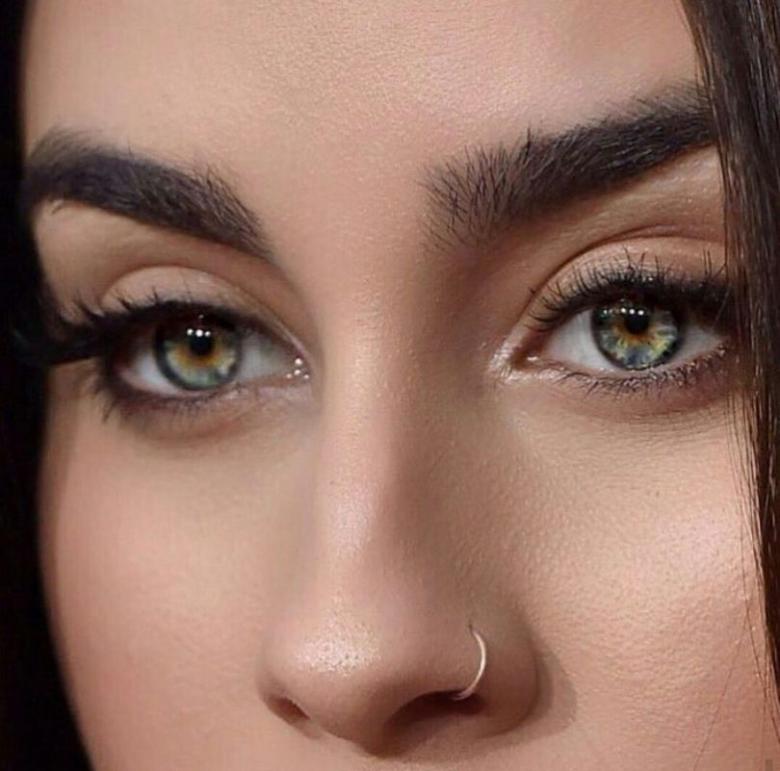
Features of the procedure
Choosing a studio and a master, pay attention to how the piercing is done. It is not recommended to do it with a gun, because it tears tissue unlike a needle, which leads to a long healing, infection and inflammation. It is more difficult to disinfect - there is a great risk that the previous client's biomaterial will remain on the work surface. And, hello hepatitis/HIV. Competent specialists use only disposable sterile needles.
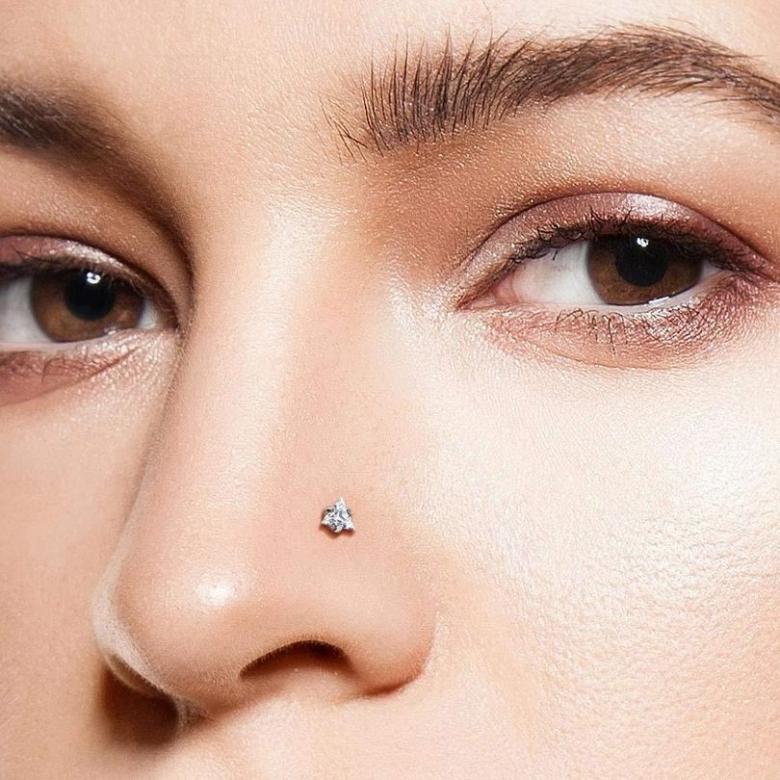
The procedure itself consists of several stages:
- Preparation of the workplace. Properly directed lamp light over the chair, preparation of the needle and catheter, sterilization of the decoration. All work must be performed exclusively with disposable gloves.
- Next, the master treats the puncture site and makes a mark with a special marker. Check whether the marked place suits you, and if not - tell him, the piercer will pick up a more suitable option for you.
- Then a needle with a catheter makes the piercing itself and through the catheter is pulled through the jewelry. Actually that's all, the entire procedure takes literally a couple of minutes. Listen carefully to all recommendations for care after the procedure!
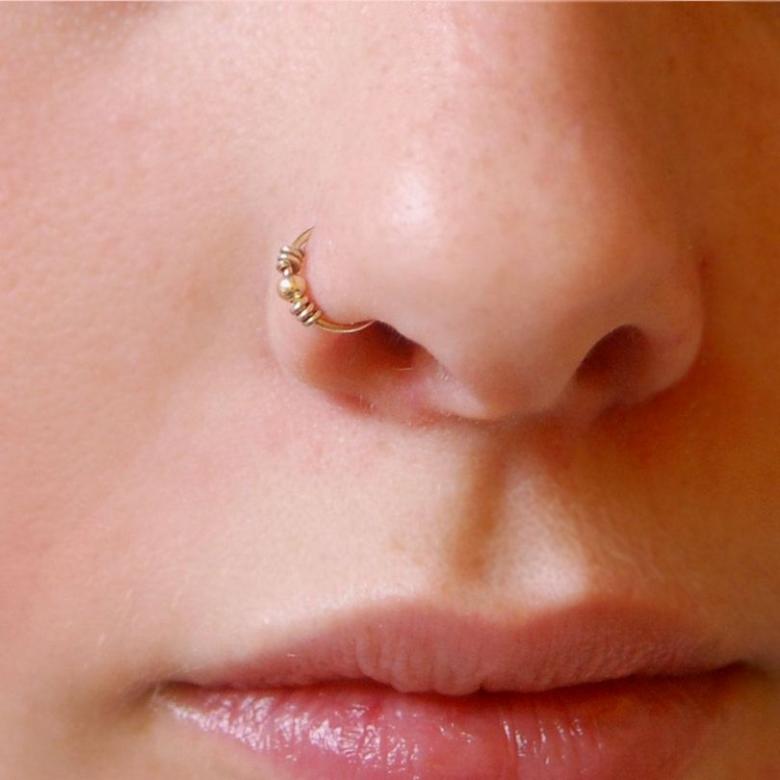
Care and healing
After the procedure the fate of your nose is entirely in your hands. On the competent and careful care depends - whether the ornament will take root or not. Here are some basic rules:
- The first couple of months the piercing is only being formed, so do not try to change the jewelry, pull it in different directions and touch it unnecessarily. Treat at this time it is better to treat twice a day with antiseptic, wetting a cotton swab in it and gently wiping around the earring.
- If a small crust of dried lymph forms in the first few days - do not peel it off. Let it either go away on its own or wipe it off gently with the wand during the treatment.
- Treating too often is also harmful - it irritates the mucosa and negatively affects the healing process.
- Do not use aggressive agents such as peroxide, alcohol or ointments - this will lead to scarring.
- After two to three months you can already replace the jewelry by previously sterilizing it.
- Visiting public water bodies in the first six months is not recommended.
- Girls should be careful with cosmetics - foundation or powder can clog the canal and cause allergies or inflammation.
- If you see any signs of inflammation, see a specialist right away.
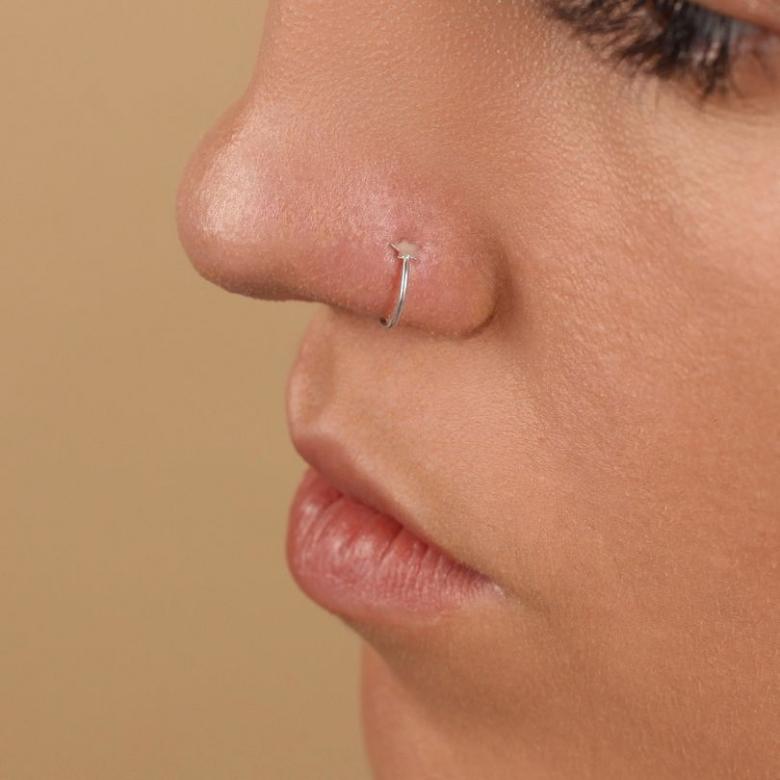
If you decide to decorate your face in this way and add spice to your image, then the most important thing is to choose a good master and to follow all the rules of care. And then such a bright detail in your appearance will please you for a very long time.

